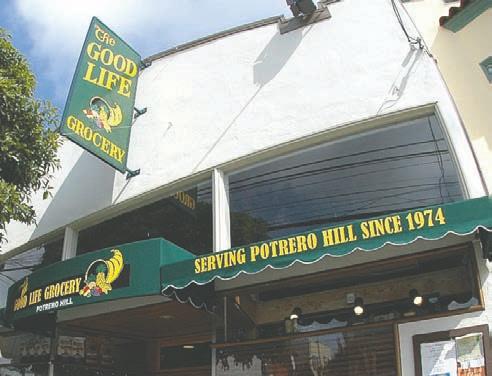








When it opens this spring, a stroll around Mariposa Park will reveal a gorgeous new member of the Mission Bay Parks System – a linked walkable green space circuit – and a peek into Mission Bay’s history. The park, located in the shadow of Interstate-280 at Mariposa and Fourth streets, is situated at the foot of what was once a swampland that teemed with life, for thousands of years home to shellfish, migrating birds, insects and shoals of small fish.
Massive growth of a burgeoning San Francisco in the late-1800s, coupled with suspect deals made between City officials and the “Big Four,” – Leland Stanford, Collis Potter Huntington, Mark Hopkins and Charles Crocker’s – influential businessmen and railroad tycoons who built the Central Pacific Railroad, led to a gradual filling-in of the marsh from the 1860s until 1910, utilizing 20 to 100 foot sand dunes that used to occupy what’s now known as South-of-Market for filler. Following the 1906 Earthquake, debris from the fallen city was used to complete the patchwork landfill. The railroad and shipping industries occupied the area until well into the 20th century.
In the late-1990s a plan was created by the Mission Bay Development Group (MBDG), in conjunction with the City and County of San Francisco’s Office of Community Investment and Infrastructure and Planning Department, to convert what’d become a 300-acre brownfield railyard into a University of California, San Francisco campus and new residences. What was once one of San Francisco’s most underutilized waterfront properties has emerged as the City’s largest urban development since the creation of Golden Gate Park in the late-1800s. Under MBDG’s overall management, thousands of homes – including oriented towards low-income families – have been created, as have jobs, retail and green spaces.
Mariposa Park features an overhead trellis meant to pay homage to the many railway turnarounds that
“It's not a lack of compassion, it's a lack of action,” said San Bruno Avenue resident Gregg Stauffer, about the City’s homeless problem. Stauffer, along with other Hill residents, is concerned about a lack of effective municipal policies oriented toward homelessness.
There are roughly 6,600 people without permanent homes in the City, including those who sleep in shelters, residential programs, and resource centers, according to the 2015 San Francisco Homeless Count Report. However, the number of people living on the street – rather than in a shelter or other temporary domicile – has increased by 32 percent, to 3,500, since 2005. More people are on the pavement as a result of changes in the built environment, such as demolition of the Transbay Terminal, where many homeless use to cluster, and the fact the San Francisco’s stock of affordable housing and its shelter system is at or near capacity, according to Potrero Boosters Neighborhood Association president J.R. Eppler.
The wait list for public housing is huge: 8,000 people. The City has fewer than 1,300 shelter beds. Shelters can be a bad fit for some people; for instance, those who can’t take care of themselves or who have significant health issues, according to Jennifer Friedenbach, executive director of SF Coalition on Homelessness. “There's not an in

between spot for shelter and hospitalization, and a high portion of people fall into that category,” she said.
The Hill appears to be attracting a higher number of homeless than other City neighborhoods in part because of the relative abundance of lightlytrafficked areas adjacent to, on, or under California Department of Transportation property. According to Eppler, these encampments are preferable to other places to sleep. “Unfortunately, they bring with them health, fire, and safety risks, both to their inhabitants and their housed and working neighbors,” he added.
Last month's Super Bowl may have encouraged movement of homeless individuals to Southside neighborhoods because unhoused people were instructed by police officers to head to Division Street, which has natural shelter and draws fewer complaints due to its industrial characteristics relative to crowded Downtown spots.
“That's what's being reported to us,”
Freidenbach said. “The officials are saying that's not what's being talked about in big brass meetings, but homeless people as an end result are being
The City’s two water taxi operators, which launched Port-sanctioned service in 2012, are profitable enough to want to increase the size of their fleets and number of landing sites this year. Gerry Roybal, maritime marketing manager for the Port, indicated strong interest in adding a landing site next to The Ramp restaurant, located at 855 Terry Francois Boulevard, which would sit across from 12 acres slated for construction of the Golden State Warriors arena. Water taxis rely on smaller boats than ferries; 60 feet or under.
According to Aaron Golbus, manager of Port operations for water taxis, the Pier 15 landing site, next to the Exploratorium, is “basically ready to be open,” but the Port needs to complete paperwork so that it can take charge of

Inc. run boats along the Port’s seven and a half miles of waterfront. SFWT operates like a bus, offering regular hop-on/
SFWT and Tideline Marine Group,
Numerous tales told over many centuries tell of enchanting creatures that used to roam the earth. Ogres, faeries, and dwarfs continue to animate modern-day narratives, in such books and films as Shrek and Lord of the Rings These fairytales are considered children's stories, featuring magical and imaginary beings and lands. But mounting scientific evidence suggests that Earth used to be home to multiple human-like species. They, and the lands they inhabited, existed. They’re gone now because we killed them off, and destroyed their habitats.
A very real type of ogre was almost certainly embodied in Neanderthals. Larger than the Homo sapiens of the time, with bigger brains, Neanderthals fought, and sometimes bred – perhaps as spoils of war – with what became modern day humans some 50,000 years ago.
Although no one knows why they disappeared, it seems likely that our descendants invaded their homelands, resulting in violent conflict, displacement, and, ultimately, a winner-take-all extinction.
Evidence that hobbits, dwarfs, and perhaps even faeries once populated the planet is regularly uncovered. More than a decade ago a six inch skeleton that looks human, but with ten ribs instead of our dozen, a squished head, and pointed skull was found in Chile’s Atacama Desert. The bones of Homo floresiensis – nicknamed “the hobbit” for its small brain and tiny teeth – were previously discovered in Indonesia. Remains of three feet tall humanoids have been uncovered on the Island of Palau, with scientists attributing their small stature to “insular dwarfism.”

All of these creatures lived more or less contemporaneously, possessing different skills and rituals honed through their relationship with nature and one another. For whatever reason, Homo sapiens ultimately won the genetics war, through overt conquest, spread of disease, or the destruction of forests and other eco-systems upon which the “less than humans” depended.
The annihilation continues to this day, with the dominant Homo technologia relentlessly displacing what we consider to be more “primitive” cultures, such as Pygmies, Native Americans and, arguably, working class Americans. The disappearance of animal and plant species appears to be accelerating, including the recent extinction of the Baiji River Dolphin, Tecopa Pupfish, and Javan Tiger. Even the Artic is melting, as if the Earth itself is weeping for its losses.
After our fellow species are gone we miss them. Our yearning for a different time prompts us to tell stories about who they were. We’re lonely without them, and share a collective sense of guilt that we caused their demise. As the living memory of their characteristics dies out, ensuing generations embellish what may have been special abilities into magical powers.
Even as we wallow in epoch-spanning nostalgia, western civilization, as embodied in a kind of mercantile colonialism, continues unabated. We give lip
The high-end home furnishing retailer Restoration Hardware will move into Pier 70 next year, the sprawling redevelopment project that’s transforming 66 acres of waterfront land east of Dogpatch with 1,000 units of housing, offices and waterfront parks. The Corte Madera-based furniture company, which has a cult-like following in the interior decorating business, will open a five-story, 60,000-square-foot showroom in the historic Bethlehem Steel administrative building, located on the corner of Illinois and 20th streets. Restoration Hardware will be a subtenant of Orton Development, which master-leased eight buildings along 20th Street that makeup Pier 70’s core. The structures, dating to 1885, once served as the West Coast headquarters for Union Ironworks and, later, Bethlehem Steel…The Port of San Francisco has also agreed to sublease 45,759 square feet of production, distribution and repair facilities at Building 104 to Tea Collection, a San Franciscobased clothing company.
“The announcement of this second project sublease to Tea Collection is evidence of the market’s interest in this exciting location, and adds momentum to last week’s announcement of Restoration Hardware’s sublease for the adjacent Building 101,” said Byron Rhett, director of planning & development for the Port. “The Port is thrilled that Tea Collection, a Dogpatch-based company since its inception, will be able to grow and continue flourishing at Building 104 for years to come.”
Last month’s The Guardian featured an article, “How the poor neighborhood that OJ forgot turned rich and forgot him back,” that takes a rather jaundiced view of the Hill’s sense of history. “… the Potrero Hill of today not only wants to forget their most famous son, they seem to want to forget where he came from entirely…Another refuge of the poor is being seized as a trophy for the rich.” According to the story, in the 1970s “Potrero Hill became known for
service to diversity while maintaining a mechanized, institutionalized, momentum to extinguish it. Almost everything celebrated as progress – industrialization, monoculture agriculture, public education, technology-driven health care, the iPhone – depends on the dominance of uniformity, assimilation, and submission to sameness.
Periodically, a David stands up to the conformity Goliath. Rachel Carson, warning in Silent Spring that birds were disappearing, stopped the sale of poisonous DDT in the United State, though its application continued elsewhere, and overall pesticide use for just 21 crops grown in the U.S. jumped from 196 million pounds in 1960 to more than twice that much today. Driven to “reservations” located in the least desirable parts of their homelands, or outside them entirely, Native Americans fight to save their dying cultures and languages. AfricanAmericans struggle to find a footing after soul-rendering slave displacement and ongoing racism. Those with autism try to tell the rest of us that they experience the world in another way, in such books as Being Human. Even Apple’s Macintosh computer mythically emerged as a way to fight the IBM machine, yet in the end it wasn’t all that different.
Champions of our preferred kind of progress cite evolution, survival of the fitness, the better defeating the weaker, to support the notion that the vanquishing of others is right and good. This line of thinking defines us as animals, incapable of enlightened thought or action. But we’re not beasts, as exhibited by our efforts to erect the rule of law over ruler’s law, and our constant, if imperfect, striving to protect the weak and the disadvantaged.
Once upon a time the world was populated by varied communities of plants, animals, and humanoids, who worshipped multiple deities that matched their surrounding diversity, practiced spiritual rites that seemed magical, in intimate relationship with their eco-systems, and nurtured a wisdom that has since been lost. Most of these communities faced short life spans, periodic famines, far worse inequality than our own present income disparities, and an extreme lack of physical comforts. They lived in an environment that was untamed, wild, and fierce. Their activities did not influence the global weather.
Eventually, a new kind of civilization emerged, one that created fantastic material wealth, and largely replaced the power of the fist with a form of equal justice under the law and participatory democracy. This new monetary monotheism did not envy the poverty that it vanquished. But deep in its heart it was sad, an unhappiness that it tried to muffle by circling around the glow of screens in homes and theaters, watching images of actors dressed as wizards and hobbits cavorting though verdant lands of enchanted forests. Meanwhile, outside, more was being lost.
It is within our power to be thoughtful, to protect the different without succumbing to the destructive. We can afford to be merciful.
its violence and a place where few in San Francisco dared to tread…Everything changed in the 2000s when restaurants began to appear…” on 18th Street.
Hello, Goat Hill Pizza and Farley’s, both of which were well-planted in the neighborhood decades before then. The Potero Recreation Center “… has become a home for the entitled. On Sunday afternoon…mainly white children playing futsal as parents hovered near, ready to whisk them to bathroom breaks…”
The View can appreciate a little press hyperbole, particularly from a British publication. But the Hill has been populated by one of the largest concentrations of European-Americans in the City since the Spanish were chased away in the 19th Century, especially working class Eastern European immigrants. Too be sure the number of African-Americans, which likely peaked two decades ago, has greatly diminished, and the community is as expensive as anywhere in San Francisco. But a tale of Black displacement doesn’t really capture where the Hill has been, and where it’s going. Of course, The Guardian came looking for a story about a prodigal son gone bad, even if the Hill would, according to its reporter, “…still open its arms to him.” To be fair, the View’s publisher’s
daughter has had the privilege of playing futsol at the Rec Center, though he doesn’t recall any parental hovering, particularly over bathroom breaks…
This spring, Jordan Keao and Jason Alonzo plan to open Aina, a Hawaiian-inspired eatery, on 22nd Street, in the storefront that previously housed the short-lived Ensoleillé, and Cup of Blues cafe before that. According to Keao, the restaurant will start with brunch, 10 a.m. to 3 p.m. Once it has its food and service down, it’ll extend into happy hour, from 4 to 5:30 p.m., which Keao calls “pau hana,” combining the Hawaiian words for “to finish” and “to rejoice in the day.” The establishment has a beer and wine license; Alonzo will be designing low-alcohol cocktails. Dinner will come afterward, the dishes reflecting Keao’s childhood in Hilo. “It may just be a nuance that triggered the influence, but everything will stem from something I ate or saw growing up,” he said. He’s currently testing brunch recipes, including many of the dishes that were popular at his Bernal Heights pop-up.
Pier 70 RestoredDevelopment activity continues in Dogpatch and Potrero Hill, with the modern style and amenities associated with new residential projects steadily eroding the industrial vibe of yesteryear. Adam Gould, Potrero Dogpatch Merchants Association member, is hopeful about what’s ahead, “I’m generally excited about the growth of the neighborhood. We are on the frontier of San Francisco and there’s a shortage of housing. It’s a great place to be and I’m looking forward to meeting new neighbors.”
950 Tennessee
The tree-lined, beige-colored commercial stretch of Tennessee Street, just south of 20th Street, will be transformed by a contemporary condominium building that’ll include approximately 129 residential units, large balconies, and floor to ceiling, street-side windows. The complex will be around the corner from Esprit Park, and a few blocks from Mission Bay. According to Ryan Fay of Zephyr Real Estate, construction plans are only now being created for the development and prices haven’t been set for the units.
Though the development may include commercial space, the existing 950 Tennessee structure is home to Watermark Press, a print shop founded in 1989 that’ll likely have to relocate. Mark Swingle, president of Watermark Press, declined to comment on the future of his business. “I believe in the market and that no one is entitled to stay in the same place unless you own the building,” said Gould, who hadn’t heard about any
plans for Watermark’s relocation. “Even though I’m a small business owner myself, that’s my worldview.”
The midrise condo complex will be much higher than the building being demolished, and is one of several projects in Dogpatch that’s eroding the neighborhood’s industrial spirit. “My sense is that people either love the Dogpatch or hate it,” Mark Fuller, president of SF Modern Condos Project, offered. “The Dogpatch represents classic San Francisco, so some
people either want to get in before it’s gone, or think the neighborhood’s feel is too much for them. It’s just too edgy and industrial for some people.”
As far as when the condos will be completed, Fuller continued, “It’s fairly far away. The developer is just getting feedback on the plans now. 2020 is the estimated completion, but that’s just my guess. Any time it’s not a vacant lot it seems to take years.”
Berkeley-based Workshop 1 was
the original architect for 950 Tennessee, which is being developed by San Francisco-based Oryx Partners, LLC, a company that also has projects at 1001 Van Ness and 230 Seventh Street. Oryx is now working with Handel Architects, a San Francisco-based firm that has other projects in surrounding neighborhoods. According to JC Wallace, Oryx founder and partner, the development is
Last month, the San Francisco Board of Supervisors unanimously approved legislation that requires the San Francisco Planning Commission to ensure developers consider a number of design features before a large residential or mixed-use project is approved. Similar “design controls” had been informally followed by the Commission on projects such as 1601 Mariposa Street and 790 Pennsylvania Avenue/1395 22nd Street.
Last December, District 10 Supervisor Malia Cohen introduced a measure to mandate their use. “I want to ensure that we're preserving the unique richness of the neighborhood and of the industrial period. That's my job. And to make sure that it's not lost with the new wave of architecture,” said Cohen.
The interim design controls, which’ll

be in place until citywide Urban Design Guidelines are adopted, are effective within the Showplace Square, Potrero Hill and Central Waterfront areas.
The controls emerged as a result of citizen frustration over the look of buildings being erected in Southside San Francisco. "We have this Eastern Neighborhoods Plan, and it has zoning requirements, but it doesn't have any design components to it,” said J.R. Eppler, Potrero Boosters president. “These projects that are going to be built are going to be here for 50, 60 years. It's a legacy to the supervisor, the Planning Commission and this neighborhood association, so they figured it was time to provide a little bit of guidance on the design aspects,"
According to Tony Kelly, Boosters vice president of advocacy, who coauthored the design standards, the City has offered little direction to developers and architects on how to design tasteful residential buildings that sync with their surroundings. "If you're a developer and you want to buy property, you've got no guidance and no idea what's more likely to be approved or not. There's been a lot of quasi-recycling of basic building ideas, because they know that could get approved," he said. "There is absolutely nothing in the Planning Code that inspires an architect or gives them any incentive at all to actually do good design work."
Last fall, the Boosters met with planning commissioners, architects, land use attorneys and residents to discuss how to encourage development projects that’re aesthetically pleasing. Rather than adopting more rules, Kelly said the goal was to "demand and inspire at the same time."
The controls center around three principles. To issue a Large Project Authorization (LPA) – one that includes the construction of a structure or vertical addition creating heights of greater than 75 feet; involves a net addition or creation of more than 25,000 gross square feet; or has 200 or more linear feet of contiguous street frontage on a public right of way –the Planning Commission must find that the proposed structures are harmonious with existing surroundings, such as neighboring buildings, streets, and open spaces; consist of facades with "texture, detail and depth;" and that the developer considered varying heights of rooftops and facades, including how they’re seen from various vantage points.
"The Planning Department is going to be instituting a set of guidelines for large projects all over the City, but the process that they're going through, because it needs to be well-researched, is going to take six months, maybe a year, to get implemented,” said Eppler. “We have five or six large projects coming up during that time period, and if we don't have guidelines in place before then, then they'll [get approved] and we're not going to have the benefit of those design guidelines."
Ron Miguel, a Hill resident and former Planning Commissioner who coauthored the design controls with Kelly, believes they’ll provoke a needed discussion on the future of the community’s residential buildings. "Neighborhoods should be consulted. A good neighborhood organization knows its neighborhood better than the developer…This was to get intelligent thinking on the design of large projects."


Less than three years after it opened, earlier this winter Potrero Hill’s NextKids/NextSpace closed its doors. According to Diana Rothschild, NextSpaces’ chief executive officer and NextKids’ founder, the quasi-preschool was felled by the same phenomenon that’s forcing many small businesses and longtime residents out of the City: high rents. NextSpace continues to operate eight other locations, including two in San Francisco, without NextKids.
NextKids opened in 2013 alongside NextSpace’s Potrero Hill offices. It provided a place for parents to work and children to play alongside each other, offering infants, toddlers and preschoolers play-based early education and parents a co-working space. Rothschild sold her idea to NextSpace, worked with the company to develop the concept of NextKids/ NextSpace in Potrero Hill, and ultimately became NextSpace’s CEO.
In a 2013 interview with SFGate, Rothschild said that she “realized I wasn't showing up as the CEO that I am, and I wasn't showing up as the mom that I wanted to be." She told Mashable, that she “dreamed up this space where I could get my best work done and show the world I was a productive member of society, and my daughter would still be onsite."
While the Hill space was designed with families in mind, according to Rothschild only about 20 percent of NextSpace members took advantage of the childcare facilities. Due to the Hill’s rising rents and insufficient revenues, NextKids couldn’t afford to renew its lease. However, Rothschild termed NextKids’s closing a “hiatus” and “it is by no means the end of the journey for the company.”
Though NextKids has closed, Carolina Street-based Recess Urban Recreation, which offers play-based activities for newborns to five-yearolds, as well as opportunities for family networking, is open. Despite previously announcing that they were moving, Recess was able to negotiate an affordable lease that extends to 2018. “After spending nearly eight
The Le Cordon Bleu College of Culinary Arts, a San Franciscobased cooking school founded in 1977, announced late last year that it’ll no longer accept new students, and will shutter its doors for good in September 2017.
The company that owns the school, Career Education Corps (CEC), attempted to sell its educational franchise, but was unable to find a buyer. In a press release, the company pointed to high food and facility costs as the main reasons for the closure. “New federal regulations make it difficult to project the future for career schools that have higher operating costs, such as culinary schools that require expensive commercial kitchens and ongoing food costs,” said CEC president and chief executive officer Todd Nelson.
The culinary school, which has a campus at 350 Rhode Island Street, has been mired in conflict and financial loss since 2007, when journalist Eliza Strickland published a damning piece about the company’s fraudulent and predatory admissions policies in S.F. Weekly. Since then, the school has been embroiled in several lawsuits with former students, who allege that they were misled about future job prospects and the quality of the education that they’d be receiving.
During its early years, the school, originally named the California
years building the business, we just couldn't bear to shut it down just because we couldn't find a place to move,” said co-owner Lisa Nowell.
“The real estate market is incredibly competitive right now, so we bit the bullet and are hoping that we’ll be able to make it work. At this point we're just trying to breakeven each month. And we will look at relocation options prior to the end of the lease. Hopefully something more sustainable will emerge.”
Recess opened its doors in 2008 after Nowell, an educator, and Kristin Jamieson, a physical therapist, imagined a place where young children could play with or without their parents in a safe and clean
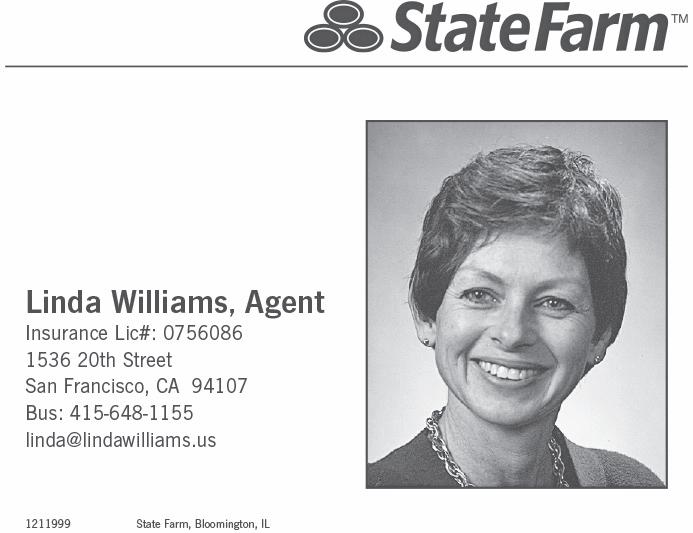
Culinary Academy, was considered a prestigious place to train, graduating chefs that went on to illustrious Bay Area careers. James Beard and M.F.K. Fisher, two cooking celebrities, spoke at the school’s first graduation. The institution was doing so well, in fact, that in the mid-1990’s it decided to rapidly expand to include three additional satellite campuses across California, as well as a New Orleans location.
The academy bit off more than it could chew. By 1999 it was in default on its San Francisco tax payments. A large publicly traded for-profit company, CEC, which was known for its ability to increase profits of small schools, was called in to aid the struggling academy. The Corps paid $31 million for CCA, and simultaneously secured a deal with the Le Cordon Bleu cooking school in Paris allowing it to use the Le Cordon Bleu stamp of approval in conjunction with the academy’s programming. Its name was changed to the Le Corden Bleu College of Culinary Arts.
CECs acquisition of CCA altered the school’s personality. Within the first two years of the deal the number of matriculated students rose from 442 to 1,868. The company added a new program in hospitality and management, and leased a larger building in Potrero Hill, to accommodate a growing student body. Admission costs rose alongside these changes, as did lay-offs. In 2005, 23 associate
environment.
“Recess provides "recess" for both children and adults,” stated Chris, a parent who was a member in 2014. Angela, quoted on Recess’ website, praised Nowell and Jamieson, “the owners are really nice and have created a safe haven for the children and for us parents too!” Recess offers Pilates classes, concerts, and playgroups. Reading material is available to allow parents a respite while their children play.
“In order to make ends meet, we have stepped up our grassroots marketing and hope that word-of-mouth will continue to spread to bring new families to Recess to join as members,
chefs were let go.
In her S.F. Weekly article, Strickland reported that admissions officers were instructed by CEC management to lure incoming students into taking massive loans to pay for their educations. Entrance quotas had to be filled, and the illusion was created that CCA was a selective school when, in fact, anyone capable of taking out a loan was admitted. Statistics around job placement after graduation, and aid offered with the job placement process, were inflated.
In 2011, CEC was hit with a class-action lawsuit by students suffering from its fraudulent advertising tactics, which culminated in a $40 million settlement. In 2013, CEC was sued by the state of New York for systematically deceiving students with fraudulent advertisements and job placement rates; it agreed to a $10.25 million settlement. Later that year, CEC announced the closure of 23 of its 90 schools across the country, due to a net loss of $33 million and a 23 percent enrollment drop.
Last December, CEC announced that it’ll close all 16 of its Le Cordon Bleu North America schools, three of which are located in California. Current students will continue with their culinary education, and programming will remain active until the last matriculated class graduates, in September 2017.
Future plans for the Rhode Island Street building are unknown.
attend workshops, participate in our great kids classes, celebrate special events like birthday parties, baby showers, and family get-togethers,” said Nowell. “If any local businesses or organizations are interested in collaborating or renting rooms out for meetings or events, we would love to connect with them! Really, anything to help subsidize our monthly overhead would be amazing.”
“Our heart goes out to [NextKids],” said Carissa, a Recess staff member. “San Francisco is so tumultuous right now for small businesses and it’s a shame to lose such a great program.”

DEVELOPMENTS from page 3
a number of months away from securing approval from the San Francisco Planning Commission. Wallace estimated groundbreaking will likely occur in the middle of next year.
Bruce Huie, Dogpatch Neighborhood Association (DNA) president, is hopeful about the development. “We’ve seen some of the initial plans, but not the current ones. To make the area more walkable, we want them to add a midblock passage. We would like to see the affordable housing units stay onsite instead of that money going elsewhere in the City. We hope that more than ten to fifteen percent of the homes will be below market-rate.”
Wallace cited a midblock passage that’ll connect Minnesota and Tennessee streets as a feature added to the project based on feedback from neighbors. He also stated that the building’s facade will incorporate both industrial and contemporary styles to complement the historic district.
888 Tennessee
Within direct sight of Esprit Park, another development is underway just north of 20th Street at 888 Tennessee Street. Owned by the S. Hekemian Group, 888 Tennessee will feature 110 units for lease and more than 5,000 square feet of commercial space. David Baker Architects (DBA) has worked closely with DNA to engage the community in the design process and chose features to blend with the historic district’s industrial roots.
“We’ve had a lot of great feedback from the DNA and they seem very happy about this development. It’s nice to have
a collaborative effort,” said David Baker, DBA founder. “Residents wanted to see more active commercial space and we added that. We also moved parking off of 20th to make way for emergency vehicles and provide clear access down that street. We’re also doing a “green alley” with Fletcher Studio that will be a pedestrianized alley featuring landscaping and benches on the side. It’ll be curb-less and still have vehicle access. It’s going to be pretty nifty. Also, we’re gearing up for a potential restaurant on the corner by extending the sidewalk to accommodate tables.”
When asked about affordable housing for the complex Baker, responded, “Yes, there’s a percentage of affordable housing and it’s a non-controversial number of units that will be available at below-market rates. It’s a win-win. We did Potrero 1010 that included 90 units of affordable housing. About 250 people applied to lease apartments and 90 people who work regular jobs won the lottery, and it cost the City nothing. We all need to work together to mitigate, if not solve, San Francisco’s affordable housing problem.”
“He’s a highly respected architect,” Gould, who lives in a DBA-designed development, stated. “I’ve lived in the Dogpatch since 2008 and go to some of the DNA meetings. 888 has been generally well received by the neighbors. There will be some commercial space on the ground floor, which makes it relevant to the merchant’s association. I walk by the 888 space almost every day. It will be nice to see a cleaned-up alley.”
Construction of the four-story complex will involve the demolition of an existing two-story building. Baker

anticipates that groundbreaking on the development will start in spring 2017, after plans have been finalized and approved.
790 Pennsylvania
Leavitt Architecture is the designer for a 48,000 square foot development, projected to have 251 apartment units, which’ll sit on the bottom of a slope between 22nd and 23rd streets, adjacent to Potrero Annex. The property currently houses California Mini-Storage. R Group, Inc., initial developers of the site, which is currently in the process of being sold, has been working with the Planning Commission and community members to iron-out project details, with construction likely to begin sometime next year.
According to Dan Adams, Director of Potrero for Bridge Housing, the development and others like it speaks to the neighborhood’s transformation and the strength of San Francisco’s real estate market. “There’s a strong demand for housing," Adams asserted. “There was some controversy around the amount of affordable housing in the proposal for the
project, so there’s still some negotiation around the public benefit contribution. All proposed developments in the City have requirements to provide affordable housing units or to pay a fee that goes towards affordable housing. I love both options. If they pay the fee the money goes to the Mayor’s Office of Housing and Community Development. The funds are then used to leverage state and federal budgets to build belowmarket rate housing. So speaking in terms of public benefit, we’d like to see construction move forward quickly. We’re pleased about the project. The sale of market-rate development at 790 will help to subsidize our housing.”
Representatives from Bridge Housing attended a Planning Commission meeting at which 790 Pennsylvania was being considered, and voiced support for a stairway that’d connect the development to the top of the slope that it’s situated on. Adams feels that the stairways’ design is beautiful and will provide an important connection to 22nd Street that will benefit future residents.
 Developments in Mission Bay.
PHOTOGRAPH COURTESY OF ORYX PARTNERS, LLC
Developments in Mission Bay.
PHOTOGRAPH COURTESY OF ORYX PARTNERS, LLC


Your health needs don’t follow a schedule, so why should you? With the KP mobile app and website, you’re able to make routine appointments, email your doctor, refill most prescriptions, and even view most test results. So you can stay closer to everything you need. Visit kp.org today because together we thrive.
It started when a whimsical gift from Peru encountered a serious academic challenge at the University of Pennsylvania Wharton School. Dan Clay, enrolled in the masters of business administration program at the school, and sporting a llama finger puppet given to him as a travel memento by a friend, was tasked with inventing a product pitch. Recalling advice that the best business ideas solved actual problems, Clay noticed that it was impossible to operate his touchscreen phone while wearing the fabric finger puppet. He considered the traditional toy in the context of modern kids’ increasing interaction with mobile devices; the idea for DigiPuppets was born.
DigiPuppets are interactive finger puppets that kids can use to operate story and learning games by tapping and swiping them on touchscreen devices. The eponymously named kid-focused technology enterprise, which became a limited liability company in 2014 while its three creators were in their last year of business school, is now a bicoastal operation. Two of the co-founders setup shop in Portero Hill last year: Brendan Green, a Mandarin speaker who has traveled extensively in China and loves logistical puzzles, handles operations and Chinese manufacturing as chief executive officer. Matt Newcomb, who has Wall Street experience, serves as chief growth officer, and heads finance and business development. Chief creative officer Clay, who among other things writes story scripts and songs based on his learning puppets idea, runs the creative team from New York.
The DigiPuppets – a blue rabbit named Honey Bunny and a little zebra named Zip – are manufactured from a proprietary material that allows them to easily grab and swipe touchscreens when worn on children’s fingers. Green and company got the manufacturing process underway in 2014. “The [manu-
facturing consultants] warned us about the bunny,” Green laughed, “because it is so difficult to manufacture anything with parts that stick out. As you know, bunnies have large ears.” But in the end, Green said, Honey Bunny, who was the star of the first DigiPuppets story, was too cute for the team to abandon.
Now Honey and Zip interact with four IOS and three Android apps. The free apps developed by DigiPuppets provide interactive background stories that focus on positive values, like inclusion, and with various games that teach skills, such as counting, finding, and memory-matching. The games and stories, with titles like, “Honey’s Hide and Peek,” and, “Honey Bunny Learns to Share,” are designed with a team of seasoned elementary school teachers. The toys and games, created for ages three to six, are themselves kid-tested and approved.

and other companies do similar things with characters and learning for television, but those are passive experiences, and we wanted something interactive and fun for kids focused on mobile, since 50 percent of kids’ screen time is spent with mobile devices.”
“We’re all uncles and I’m a godparent. Our experiences with the kids we know give us a lot of our ideas,” Green said. “We do some focus group testing, offering the toys locally through the NextDoor app and then getting the kids’ feedback. It’s like DigiPuppets playdates.”
The product was launched last fall, and was in stores in time for Christmas, with placements in 29 Bloomingdales, 15 independent outlets, at Amazon, app stores, and through the company’s own website. Operating with less than $1 million after four rounds of funding between 2013 and 2015, Digipuppets chose to market primarily through social media and at in-person events at libraries and similar outlets. Last Halloween, the company gave away 400 DigiPuppets to kids outside Hazel’s Kitchen on 18th Street. The reception so far has been positive, with mentions on The Today Show
“Touchscreens are the most popular kids’ toy,” Green said. “Disney

DigiPuppets has sold 2,000 puppets to date at $9.99 each, and is developing additional characters and story arcs that create an entire interactive world. A cast of characters that includes a dog, a cat, and a human princess are already part of the DigiPuppets story world online. According to Green, now that the company has shown the products have toy-industry legs, the next step is seeking-out license holders of existing popular characters that could be developed into touchscreen-interactive finger puppets of their own.
dotted the area. Gabion benches are filled with rubble from warehouses that were demolished to make way for new developments, such as UCSF’s Benioff Children’s Hospital, which opened last year across the street. The park boasts a one-seventh mile walking path shaped like a butterfly’s wing, the park’s namesake, a detail only visible aerially or from the hospital’s upper floors. It’s landscaped with plants known to attract local butterflies in an effort to return a modicum of biodiversity to Mission Bay.
At more than two acres, Mariposa Park will be the largest completed space within the Mission Bay Parks System until the construction of the 5.5 acre Bayfront Park, located between Terry Francois Boulevard and the Bay. That park is scheduled to be completed in 2018, in advance of the recently christened Chase Center, which supporters hope will open in time for the Golden State Warrior’s 2019/20 season.
For information on upcoming events, including free concerts and children’s activities, visit www.missionbayparks.com.

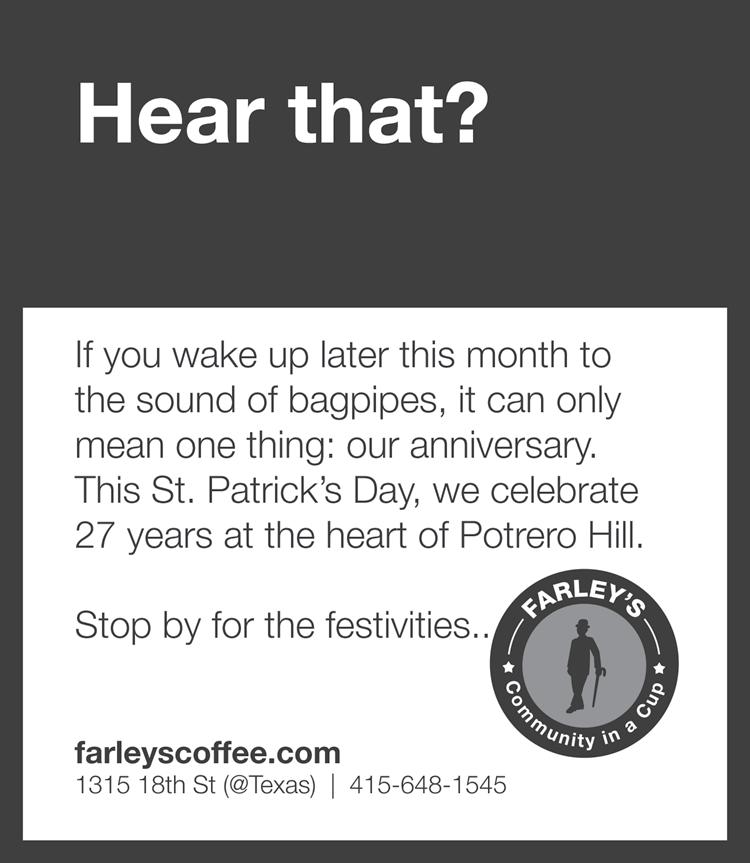
As the View reported last October, the Potrero Hill Neighborhood House – known as the “Nabe” – has suffered from severe funding cuts over the past several years. At the end of 2015, the nonprofit settled a $120,000 tax lien that’d been placed on it by the Internal Revenue Service for nonpayment of payroll taxes. The Nabe continued to run City-sponsored programming while it resolved the lien. However, the organization’s executive director, Edward Hatter, learned later that City policy prohibited it from being reimbursed for municipally-funded programs while it operated under the lien. Now that the lien has been resolved, the Nabe is again receiving City reimbursements for qualified programs. However, the nonprofit started its almost $1 million 2016 budget $30,000 in the hole.
According to Hatter, Hill residents and others responded to last year’s View article with increased giving. The Kaiser Foundation provided a $25,000 grant, which Hatter used to repair an elevator and convert a storage room into a 12-person spectator area for the facility’s gymnasium, which was recently renovated courtesy of a gift from the Fiori Foundation. The new gym, plus the soon-to-be-christened Kaiser Fanbox, is available for rent to individuals and organizations looking for event space.
The Nabe’s most pressing need is an overhaul of its broken furnace, which has been inoperable since the beginning of the year. The nonprofit can’t afford even to bring in a boiler mechanic to look at the heater, let alone pay for necessary repairs. According to Hatter, a furnace overhaul is essential to operation of Nabe programs, many of which serve children and senior citizens, during a cold winter. “These are desperate cries,” Hatter emphasized.
The Nabe’s municipally-funded programs are paid for on a cost-re -

imbursement basis. In some cases the City stipulates that the organization’s programs must serve certain demographic groups. For example, the San Francisco Department of Public Health supported a substance-abuse program for many years, but stipulated that it cater to African-Americans, whose Hill population has shrunk. Without an adequate client base the Nabe had to close the program.
According to Hatter, the Nabe –which has served the Hill for 109 years – needs $150,000 in private funding annually to survive, based on average budget shortfalls in recent years.
While the Nabe’s financial situation remains challenging, its programming continues to be lively. According to Kansas Street resident Sally Taylor, Monday night activities are well attended, and feature ping-pong, basketball, Zumba, and karate. After-school tutoring is regularly offered, and a senior food pantry operates every other Wednesday.
Facilities at the Nabe are available for rent. In addition to the gym, the Nabe is prepared to lease its southeast wing, which includes two large rooms suitable for conference space or communal offices, plus an additional office, restroom,


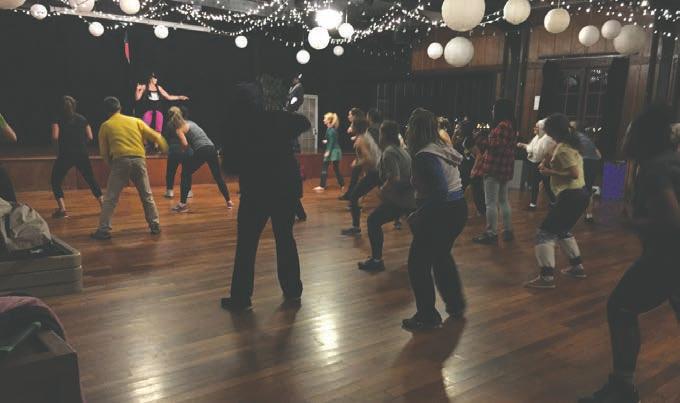

On February 4, 2016, over 50 Potrero Hill residents gathered at the Rebuild Potrero’s Community Building Group Meeting at the NABE.
In celebration of Black History Month we played a game, “Who Said That”, where meeting attendees formed two teams and guessed which notable black figure voiced a certain quote. One such quote was, “Character, not circumstances, makes the person.”
Do you know who spoke these affirming words? (Answer: Booker T. Washington).
Too often words are used to hurt, and this activity was a nice reminder of the positive power of words: to teach, make you think, motivate, empower, and heal. Members of both teams received a gift bag of tangerines in honor of Lunar New Year. Chinese associate the gifting of oranges and tangerines with happiness and prosperity.
The focus of the remainder of the meeting was on Rebuild Potrero updates. The most exciting development is that first phase of construction is projected to begin late this year. This new housing will be built on an empty lot at the corner of 25th and Connecticut Streets and will not require any relocation of public housing residents. Also, we have begun the relocation planning process, so residents are aware and prepared to move when it is their time. The first moves will begin in 2018.
Stay informed about Rebuild Potrero and other community projects.
Come to the next Community Building Group meeting on April 7, 2016, 7 – 9 PM at the Potrero Hill Recreation Center.
For more information: website: rebuildpotrero.com,

hop-off service for a daylong pass, with stops at Pier 1.5 – the Ferry Building – Pier 40, and the Hyde Street Pier. Tideline provides an on-call service, stopping at the same three points as well as Treasure Island, the St. Francis Yacht Club, and spots in Marin and the East Bay. SWFT’s prices range from $5 to $15; Tideline’s start at roughly $35. According to Roybal, last year the operators contributed less than $11,000 to the Port’s general operating fund.
Captain Dave Thomas, SFWT’s owner, said he’d like to offer on-call service and a Treasure Island stop. “We’ve got two boats on the Bay right now, but I have been buying boats. I have six boats right now, all in different boatyards having things done to them. One day it’s going to be a perfect storm, where we’ll have more boats than passengers. Then we can think of expressing people over to Angel Island,” said Thomas.
“We’re trying to begin a commuter service going from Berkeley to San Francisco where we stop at the Ferry Building,” said Nathan Nayman, Tideline’s president. “We’ve had conversations with representatives of the Warriors and UCSF about getting a water taxi over there. We’ve talked with Lennar about getting a boat over to the Shipyard to take residents to the Ferry Building. We’ve also been in conversation with a number of information technology companies in the South Bay. There seems to be a demand to have stops in Redwood City and at Moffett Field.”
Nayman said Tideline has three boats running. “We’re hoping as the business grows to add to the fleet,” he said.
Ellen Johnck, chairman of the Maritime Commerce Advisory Committee, which advocates for the City’s maritime industries, said the committee is interested in placing landing sites at Anchor Steam’s planned expansion at Pier 48 and other Southside piers.
“Whoever has a pier, we would (be interested) in reserving space for landing sites for water taxis. We’re updating our waterfront plan. We will have nine meetings this year,” said Johnck.
“We are very much interested in transportation by water and agree with the Port that the vision includes water taxis,” said P.J. Johnston, spokesperson for the Warriors.
“We are fully in support of the Port’s exciting initiative to expand water taxi service along the Bay,” Fran Weld, vice president of strategy and development for the San Francisco Giants, said. “Already, between five and ten percent of fans take ferries to the ballpark depending on the time of year. We look forward to seeing increased water access to the ballpark and our growing South Beach, Mission Bay communities.”
“I think that better water transportation will be part of the transportation plan,” said J.R. Eppler, Potrero Boosters president. “The Boosters have been advocating for additional transportation services on the eastern waterfront for quite a while.”
According to Alice Rogers, vice president of the South Beach Rincon

Mission Bay Neighborhood Association, her organization hasn’t discussed the expansion of water taxi service. “I’m personally all-in for water taxis, especially the service that is trying to give low cost rides to points along our waterfront on a regular schedule,” said Rogers, who added that she’d enjoy dining at The Ramp and catching a water taxi home.
Patrick Valentino, South Beach Mission Bay Merchants’ Association president, said that additional landing sites in the Southside would help build retail corridors. “When you get people coming off a water taxi, hopefully they’re walking somewhere. When you know you’ve got foot traffic, you can put retail in between. You’ve got more opportunities for retail places to be successful,” said Valentino. “It’s just like Jack London Square over in Oakland. You see people go there because there’s a cluster of things to do.”
Valentino said foot traffic generated by water taxis could encourage restaurant and retail activity in Mission Bay, including to a retail center being developed across from Pier 40 at 101 Townsend Street, and to ground floor retail space at Townsend and Second streets close to the CalTrain station. He said additional landing sites could also serve the industrial waterfront, which
stretches for a mile south of AT&T Park to The Ramp. “It’s a very interesting place to be. There are offices there, but it’s hard to get there,” said Valentino.
“Water taxis have a very low environmental impact on the water and no new impact on the shoreline. They’re using existing piers. They add a transportation alternative to (places) that are very congested on land,” said David Lewis, executive director of nonprofit Save the Bay.
Carolyn Horgan, president of Blue & Gold Fleet, Inc., which operates large excursion boats from its base at Pier 41, said she was initially unclear on how water taxis would work along the waterfront. She’s become less concerned over the past two years because there’s been no accidents between water taxis and excursion boats. There’s also been a minimal effect on her business’s revenue. “We like to encourage all water transportation because we certainly need it,” said Horgan.
Golbus said entities interested in having a landing site should be mind ful that such facilities are meant to be functional. The Exploratorium has a number of interactive exhibits around its campus, but the water taxi landing site couldn’t be as creative. “You don’t build landings like that artistically. You build them structurally,” said Golbus.


With average square footage home prices hovering at $1,100 in Potrero Hill, property owners have a rich incentive to max-out expansions, extensions, and construction of new structures. High demand and scarce supply of housing has led to the steady development of what some longtime Hill residents consider to be Monster Homes. And while City ordinances don’t guarantee that existing views from a given home or flat will be protected, there’s significant wiggle room in municipal guidelines to enable clever architects to design buildings that take advantage of every inch of buildable space.
Built in 1910, the single-family home at 891 Carolina Street shows clear signs of having been neglected for many years. Bill Canihan, Jr., the property’s owner, sought to tear-down the structure in the early-2000s, and replace it with a large four-story home with sweeping views, designed by Walters Architecture. That project was rejected by the San Francisco Planning Department due to its proposed scale. More than a decade later, in 2014, new plans were drafted by John Lum Architecture to develop a roughly 4,000 square feet, four-story, building.
The current home rests atop a hill on a residential stretch of
Carolina Street, near 22nd. Many of the surrounding houses are one or two-stories, with 2,000 square feet of space. Some Hill residents feel that new developments should conform in size and design to the rest of the neighborhood. And, according to the Planning Department’s Residential Design Guidelines , published in 2003, “Proposed projects must be responsive to the overall neighborhood context.” The Guidelines are intended to help preserve community characteristics and contribute to the City’s aesthetic appeal and quality of life.
According to Planning Code Section 311(c)(1), “The construction of new residential buildings and alteration of existing residential buildings in R districts shall be consistent with the design polices and guidelines of the General Plan and with the “Residential Design Guidelines” as adopted and periodically amended for specific areas or conditions by the City Planning Com-mission.” The Guidelines cover a number of design elements, including expectations associated with the development and proportion of corner buildings.
Although the Planning Code allows for heights of up to 40 feet, given that 891 Carolina Street is on a hilltop, some neighbors feel that a four-story building would loom large over adjacent edifices, and
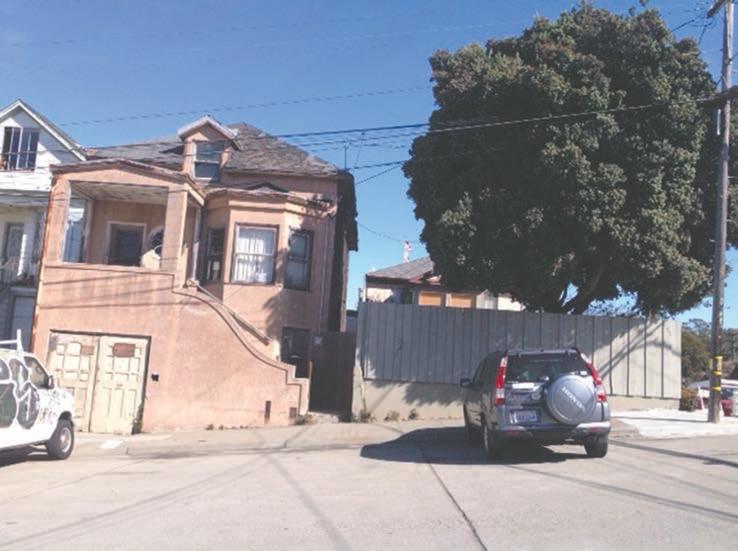
erode the block’s character. “The design itself is not bad, but for this location, it’s out of scale both in footprint and in height,” said Kris Gardner, a longtime resident of the block. “I’m concerned about the size and scope in relation to the rest of the neighborhood. The proposed building is extremely large for the area. Four-stories is a departure from keeping in character with the neighborhood. We have to ask ourselves if this is an appropriate way to build.”
The project is in the final review
process with the Planning Department. In mid-March John Lum Architecture will present what it hopes will be the last set of plans. Residents close to the property can expect a meeting notice via mail.
Gardner believes that the Planning Department’s treatment of the project will be prece-dent-setting for the neighborhood. “There needs to be more collaboration between developers and residents. People need to be heard,” she said.
This is the first of a two-part series.
Learn more for free about maintaining an active, healthy lifestyle at the Saint Francis Spring Health Education and Wellness Series. The specialists at Saint Francis are available to help you learn more about how you can keep that spring in your step.
Robotic Myomectomy and Fertility
Leslie Kardos, MD
March 10, 2016
Waterworks–Overactive Bladder and Urinary Incontinence
Heidi Wittenberg, MD
March 16, 2016
Update on Breast Health
Anne Peled, MD
April 6, 2016
ACL (knee) Injuries: Rehab or Repair
Robert J. Purchase, MD
April 20, 2016
All classes begin at 5:30 p.m. and are located at Saint Francis Memorial Hospital. Food and beverage will be served and parking is validated. To learn more or to reserve your seat, visit dignityhealth.org/saintfrancis, call 415.353.6755 or email robin.oconnor@dignityhealth.org.
891 Carolina Street shows signs of neglect.
Jacky was raised in Honolulu, Oahu; Michael comes for Philadelphia, Pennsylvania. She moved to San Francisco in 1985; he arrived a year later. “We met through Jacky’s roommate and mutual friend while she was the assistant hotel manager at Campton Place and I was the pastry chef’s at Taste Catering and had my own business making specialty event/wedding cakes,” said Michael. “We didn’t hit it off at first, but I called one day for Laura, her roommate, to hang out and Jacky answered the phone. Something clicked then. I picked her up for an all-day-epic-date and we’ve been together ever since.” They landed in Dogpatch in 2011, attracted by “the community of people.”

The couple own and operate Recchiuti Confections and the Lab Café. Michael is responsible for production and research and development; Jacky is the creative director. “We both ran the café when it was a full service restaurant; now if functions as an event space for our taste Project six-course dinners and a popup space for Feastly,” said Michael. One of the best things about his work is creating “…a food product that brings happiness to the recipient,” he said.
Michael’s grandmother baked wedding cakes for her Italian neighbors. Jacky’s father “was a fearless athlete, played pro-baseball in Hawaii/NY/Japan and retired as a firefighter/fire chief.” A wonderful day for the couple is “actually getting to sleep in a little; hang out with the cats for a breakfast, go for a great long walk to a museum/hear music/see a performance for the day, popping into a friend’s restaurant for a light meal… alternatively cooking for friends and neighbors when we can and hanging out in Dogpatch,” said Michael.
As far as music, the couple likes Bill Frisell, Snarky Puppy, Four Tet, Tim Hecker, and Middle Brother. Michael is particularly fond of Brian Eno, while Jacky lends her ears to Jesca Hoop and Bastille. The pair prefer Delfina, Locanda, and Bar Tartine in the Mission, Stone’s Throw in Pacific Heights, and Kronner Burger in Oakland.

Lundberg was born in Cincinnati, Ohio, two weeks after his parents emigrated from Sweden. He moved to San Francisco in 1980. “I was working at an architectural firm, Marquis Associates, and we hired Mary as a marketing consultant. We’ve been friends for over 30 years,” he said.
“I bought our building, 2620 Third Street, in 1996, which serves as the studio for Lundberg Design, but we’ve always had an apartment in the building,” Lundberg said. “For 10 years we lived on the Maritol, an Icelandic car ferry that we docked at Pier 50, but the last five years we’ve lived in the apartment during the week; it’s entered off of our parking lot, which is on Tennessee Street. I’ve always liked the diversity of people and uses” in the neighborhood, “the Hells Angels, Muni, American Industrial, and now even an interesting mix of restaurants.”
“I’m the principal designer at Lundberg Design. We’re mostly architects, but we also have a fabrication shop and we build things. We design furniture, fixtures, landscapes, and occasionally sculpture. I’m very fortunate to get paid to do the thing I love most,” which includes “interacting with my incredibly creative staff and my impossibly interesting clients. I get to live an amazingly interesting life. I’ve had two mentors, both bosses of mine: Robert Vickery in Virginia, who hired me when I knew nothing, and Robert Marquis in San Francisco, who taught me the importance of eating well.”
The couple likes to spend time at their “…cabin on the Sonoma Coast with our two dogs,” Lundberg said. “Hunting for Matsutake mushrooms and then cooking a great meal on our wood hearth for friends, ending the evening with a little bourbon from the bourbon bunker. Charles Phan and I are partners in HardWater, so this tends to influence my drinking habits. These are the days that inspire my design work.”
“We’ve designed quite a few SF restaurants: Slanted Door, Mourad, Presidio Social Club, Sessions, HardWater, Bluestem Brasserie, Seaglass, Out The Door,” Lundberg said. “I love the food at every one of them. Slanted Door was our first, and Charles is a close friend, so it has a special place in my memory. My favorite place that I haven’t designed is Kin Khao, which I think makes extraordinary Thai food. Favorite dishes are the mussels at Sessions and the smoked ham at Henry’s Hunan, this being the dish I’ve eaten more than any other, ever!”
BY SUSANChristianson grew up on a farm in Iowa, but mostly raised in Minnesota. intro photo class,” said Mullan. “Sarah I moved out to California” – Mountain another year before she finished her graduate
The couple settled on Tennessee Street know a lot of our neighbors and local business to neighbors on the street!”
Christianson is a documentary photographer. and exhibit them for others to see,” she Schon Gallery in Mill Valley.” Mullan and seeing computers do work on my behalf,” Kidder at a very young age, and it was enthralling.”
A perfect day for Christianson is “having ing in the darkroom, followed by supper to Sarah, make breakfast, pickup bread Sunday farmers’ market here in Dogpatch,
These days Christianson is listening drawn to The New Spot, Gilberth’s, Poquito,
Grace was born and grew up in New York City, on the lower Eastside. Peter was born in Santo Domingo, Dominican Republic, and raised in Manhattan, New York City. The couple has lived in San Francisco for almost 30 years, residing on Tennessee Street since 1998.
“Peter and I met in a little well-known neighborhood restaurant in Greenwich Village, The Beatrice Inn,” said Grace. “It was in many ways a version of Cheers. Everybody knew everybody, but there were different groups of regulars. My family was friends of the owners.”

G race is a therapist. “I work within the framework of Depth Hypnosis, which incorporates, transpersonal psychology, Buddhist philosophy, hypnosis, shamanism and effective. My practice has grown tremendously people make changes in their life and in themselves sorts. I’ve been interested in alternative healing introduced to Isa Gucciardi, who developed Depth number of years, and was pursuing a doctoral degree I saw the value in it from the start, and have personally
Peter is an attorney. “It suits my limited skills, the criminal side, is always exciting. Although I a man I’d known since I was a child; he was, truly, became partners, along with another person.”
“I have so many favorite things about Dogpatch,” neighborhood and this little part of Tennessee Street any other neighborhood in SF. And, it continues day is a sunny day in Dogpatch. I have time to take the end of the day it’s cocktail hour next door with
As far as Peter’s perfect day, it’s “an impossible would like, and “a wonderful day” seems foreign
Grace’s favorite restaurants are in Dogpatch: remembers you, and know you are from the neighborhood,” up with that in New York and have often missed some pretty fabulous food! Also have to add, I love be one of my favorite things to do. I’m an Italian
ONE BLOCK block. Modest Potrero Hill, who’d like to editor@potreroview.net.BLOCK highlights the people and places of a particular Modest stipends are available to Dogpatch, Mission Bay, Hill, Showplace Square, and South-of-Market residents to profile their block; those interested should contact editor@potreroview.net.
North Dakota, an hour north of Fargo. Mullan was born in “I was attending the University of Minnesota and took an “Sarah was getting her MFA and was the TA. We fell in love, but View – “the next year for work. We dated long distance for graduate degree and moved out to live with me.” Street in 2011. Dogpatch “feels like a small town because we business owners,” Christianson said. Mullan likes “talking photographer. “I get to travel, work on projects I care about, she said. “My next show will be opening March 24 at Zener is a software engineer at Pandora. “I love solving problems behalf,” he said. “I read The Soul of a New Machine by Tracy enthralling.”
“having breakfast and a lazy morning with Jesse, then worksupper with friends.” Mullan likes to “sleep in a little, wake up bread from Just For You, meats from Olivier’s, produce from a Dogpatch, go for a light hike, and make supper together with Sarah.” listening to “David Bowie; he will be greatly missed.” The couple is Poquito, Hard Knox, and Moshi Moshi in Dogpatch.
Flores and his partner, Annabelle, are both from Southern California. They each lived in the Bay Area in the 1990s before meeting, moving to Dogpatch in 2008, and Tennessee Street in 2011, where they’re now raising a daughter.
The couple own Mr. and Mrs. Miscellaneous on Third Street, where they sell ice cream and “other sweet nibbles…Ann and me met through our old boss actually, we never worked together before opening shop though,” said Flores. “Same restaurant, different years. Weird we were in a lot of the same places just not the same time. LA, SF, NYC...she thought we might hit it off. I guess it worked. I still don’t know if it was her intention but she kinda lit the spark…”
A perfect day for Flores: “employees show up healthy, freezers work, no one yells at me for not having cookie dough...”
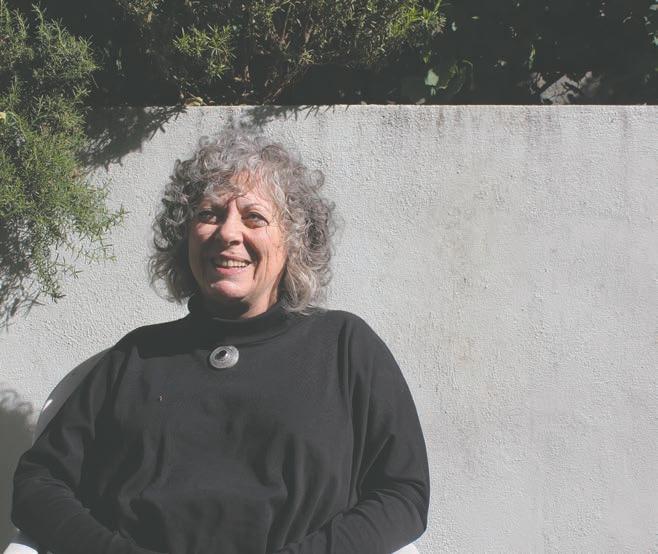
energy medicine,” she said. “I love what I do because it really is over the years because clients refer. It’s very fulfilling to help themselves and have less suffering. I’m by nature a caretaker/healer of healing since I was I child. I was pursuing a healing path when I was Depth Hypnosis. I’d already been a certified hypnotherapist for a degree in psychology when I was introduced to the Depth Hypnosis. personally benefitted from the work.” skills, and I get to help others,” he said. “Trial practice, especially entered the field by happenstance, I was greatly influenced by truly, a living legend in criminal law in New York City. Later, we Dogpatch,” Grace said. “First, I have fabulous neighbors. It’s a real Street is the best of that. I also love that we have the sun, more than to get better, great restaurants and shops. A perfectly wonderful take a walk in the neighborhood. Have 5/6 clients scheduled and at with my neighbors, Michael and Jacky Recchiuti and Susan Eslick. impossible question for me to answer. I tend to be more cynical than some foreign to my way of thinking.”
Dogpatch: Piccino, The Lab, Serpentine, and Just for You. “The staff neighborhood,” she said “It’s friendly and personalized service. I grew that here. It’s great to have found it here in Dogpatch. It’s also love to cook and have friends over for dinner. That may actually Italian married to a Latino…we feed people!”

Dennis Herrera moved to Tennessee Street in 1993. Five years later he was joined by Anne, with Declan, now 14, a more recent addition. Dennis grew up on Long Island, mostly in Glen Cove. He moved to San Francisco in 1988. He treasures “the diversity of the folks that live in the neighborhood and the genuine feeling of community that you find. I think it’s unique in San Francisco.” Dennis was elected City Attorney in 2001. The best thing about his job, he said, is “that I can use the power of the law to make a difference in people’s lives on virtually any issue under the sun. To have the power to right wrongs is tremendously gratifying.”
Anne hails from Los Angeles. After a brief detour to Scottsdale, Arizona she settled in San Francisco, and met her future husband at a friend’s wedding at the City Club in 1997. She’s a realtor for Sotheby’s International Realty. The best thing about her work, she said, is “bringing buyers and sellers together. The seller loved the home once, and possibly still does. It’s nice to see it pass on to its next caretaker. Even though a home sale/purchase can be very emotional, it’s a big business transaction, so being part counselor and part knowledgeable sales person is essential.” Anne’s grandfather started Artz and Cook Real Estate in Sacramento in 1924.
Declan, who attends Chinese American International School, likes the basketball court behind I.M. Scott School on Minnesota Street, and is fond of his neighbors. Ann loves Dogpatch’s weather and pedestrian-friendly vibe, particularly “a warm sunny day to play tennis and eat dinner outside on the back deck. No fog allowed.” The family’s favorite eateries include nearby Moshi Moshi and Piccino. They also like Don Ramones Southof-Market, and Locanda and Delfina, in the Mission.
 PHOTOGRAPH BY HANNAH RUBIN
PHOTOGRAPH BY HANNAH RUBIN
Thick House opened in 1996 in the Goodman 2 live-work building. In the two decades since, the 78-seat, simple, unadorned performance space, owned by the nonprofit Art Space Development Corporation (ArtsDeco), has hosted a wide variety of productions by many diverse companies and independent artists.
The alternative group Thick Description made its debut in 1999 at the theatre with the world premiere of Under Western Eyes, an Asian Americanthemed adaptation of Joseph Conrad’s novel, directed by Thick Description cofounder Tony Kelly. Other companies that’ve used the venue include Theatre Rhinoceros, Blue House Arts, Crowded Fire Theatre Company, and Golden Thread.
Now comes an exciting new role for Thick House, which is located at 18th Street between Carolina and Arkansas streets: PlayGround has signed a sixyear master lease of the venue, with a five-year extension option through 2026.
Founded in 1994, PlayGround serves as an incubator, providing opportunities for playwrights and performers through its monthly Monday Night staged reading series, full-length play commissions, and New Play Production Fund, which offers support for new works by local playwrights. PlayGround began producing its an-
nual Best of PlayGround Festival at Thick Description in 2008, and has staged co-productions of new fulllength plays there, including Diane Sampson’s Sleeping Cutie, Robin Lynn Rodriguez’s Hella Love Oakland, and Garrett Jon Groenveld’s The Empty Nesters. PlayGround Film Festival is its newest initiative, showcasing short films adapted from plays by Bay Area writers and filmmakers.
According to a press release, PlayGround has “supported 200 local playwrights in the development and staging of more than 750 original short plays and 60 new full-length plays, including 18 that have since premiered in the Bay Area, New York and around the country.”
A $260,000 capital campaign has been launched to support significant capital improvements to the Thick House, including new heating, ventilation and air conditioning, seating, lighting and signage. The last is particularly important, as one could pass by without realizing the theatrical delights taking place just off the street. Among the leading theatre consultants working on the project are lighting designer York Kennedy, acoustical engineers Charles Salter Associates, and The Shalleck Collaborative theatre planners.
“This is a wonderful time to strengthen a resource we already have,” said Jim Kleinmann, PlayGround’s artistic director and co-founder. He em-
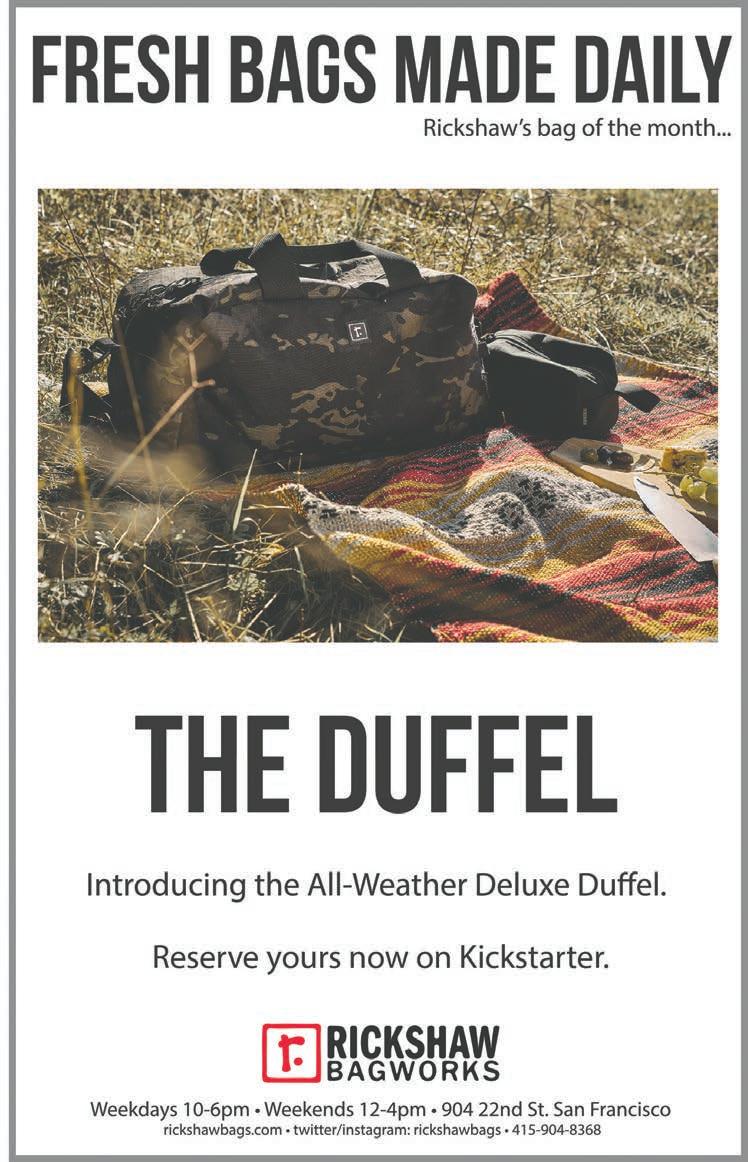
phasized the company’s commitment to solidifying relationships with Potrero Hill, including neighborhood restaurants and other local businesses, schools, and the library.
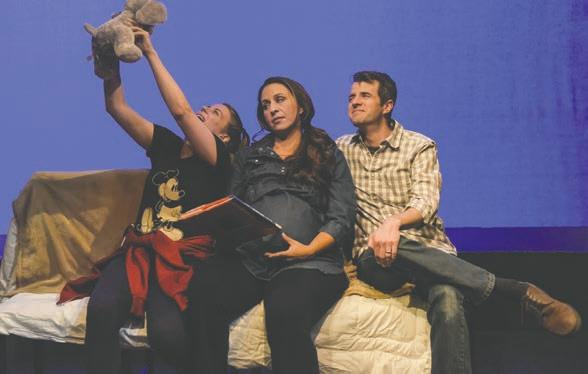
The veteran arts administrator has served as chief executive at some of the Bay Area’s leading performing arts organizations, including Smuin Ballet, Marin Theatre Company, A Traveling Jewish Theatre, and currently Berkeley Symphony. His master of fine arts is from Yale School of Drama, where he also worked for the Yale Repertory Theatre.
This year Thick House will host productions from Crowded Fire from now until April and September to October, Golden Thread in May and November, the 20th Annual PlayGround Festival of New Works in June and July, and 3Girls Theatre in August. The facility will close for several weeks in late-2016, reopen-
ing in early 2017, “renamed, renewed, rebranded,” according to Kleinmann. Its new name yet to be determined, when it relaunches the theatre will offer a week-long celebration slated to feature an open house, performances and readings. Immediately following the week of festivities, the first show will be a four-week PlayGround coproduction, currently in development. Other productions are scheduled through the summer of 2017, with a commitment to “collaboration and developing crossover content,” providing support for “bold new voices”.
“This is a really exciting moment!” Kleinmann exuded.


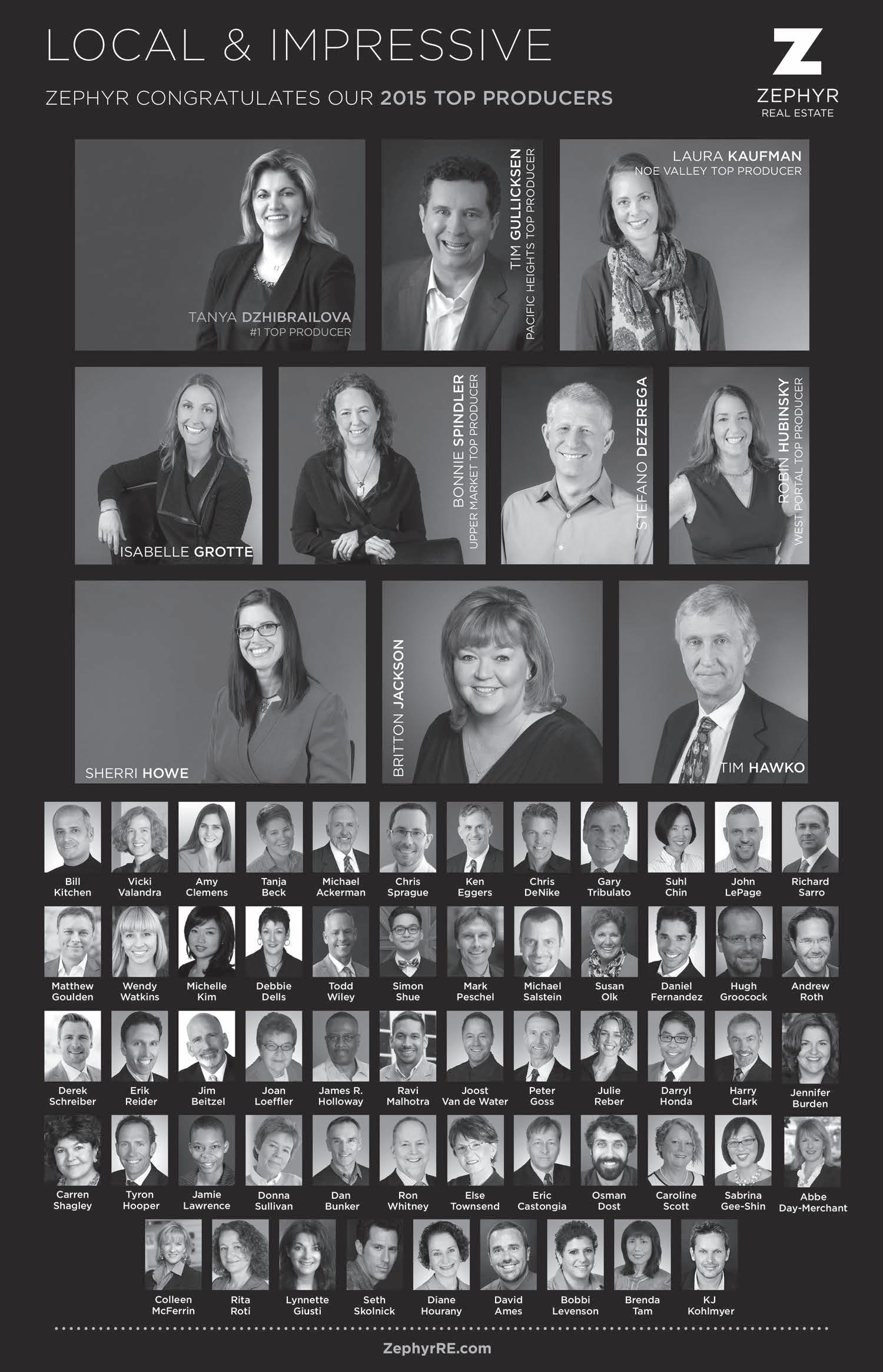


On a sunny day in Potrero Hill – a neighborhood with more than its share of sunshine in a more often foggy city – cafes and open spaces tend to be wellpopulated. Crowds mill outside Plow; the ting! sound of bat on ball, and subsequent hoots and hollers of a softball game, can be heard at Jackson Park; dogs and their companions sniff the grass at Esprit Park.
Metin has helped make his familyrun restaurant – Pera, located on 18th and Connecticut streets – a neighborhood pillar. For almost six years the eatery has offered a delicious array of Mediterranean lunch and dinner plates, while contributing time and food to local school fundraisers, particularly Daniel Webster Elementary School, which is just a few blocks away. Metin lives in Oakland; his time on the Hill is usually limited to restaurant hours.
Ben, a second generation Hill resident and Christopher’s Books bookkeeper, sees the neighborhood at all times of the day. Ben’s passion for “connecting with people one-on-one” nurtures his love of the neighborhood. Still, love has its limits. Ben finds some recent community trends as unwelcome, including the erratic driving habits of commuters and a decline in friendliness, so much so that he’s begun to imagine calling somewhere other than the Hill “home.”
Olivier, who has lived in two different Dogpatch locations, spewed out a long list of favorite locations for eating and drinking faster than you could say “Dogpatch Saloon.” He too sees drastic
changes to the neighborhood he’s called home for a decade and a half. Still, the newfound sense of community amongst his more recently arrived neighbors keeps him in the area.
Wyatt and Lindsey, former Dogpatch residents who now share a Noe Valley apartment, regularly travel to Esprit Park to visit friends and feel a part of their old neighborhood again. Ryan, Steve, and Tyler, three friends who work in marketing and technology, venture to Dogpatch for lunch at Just For You Café, or share ice cream cones at Mr. and Mrs. Miscellaneous, despite living and working in completely different quadrants of the Bay Area. Tyler lives in Oakland, and commutes to San Francisco daily for work and to volunteer once a month at the University of California, San Francisco Benioff Children’s Hospital. Ryan and Steve are Inner Richmond residents. All three have friends who live in Dogpatch, who encourage more frequent visits.
According to Lisa, who’s lived in Dogpatch for about a year, the neighborhood is starkly different from her former Russian Hill residence. Community engagement, online and in-person, fosters an “extremely neighborhood friendly” sensibility that creates a “small-town feel.”
Metin said that newer patrons to Pera tend to be young, single and less consistent customers than his longertenured regulars. Aiden, an 18th and Illinois streets resident for more than 25 years, finds that his interactions with the latest crowd are “transactional.” He
believes appreciation for a strong sense of community and overall friendliness is declining as the area’s population grows. Ben echoed this sentiment, pointing to an “aloofness,” combined with an “obses-
sion with wealth and technology,” that’s creating a new Hill culture. The sight of Maseratis and other luxury cars cruising through the neighborhood is becoming commonplace.
I’ve been a Potrero Hill resident for eleven years. Before that, I lived near Glen Park, and before that in the Sunset, where my grandparents owned a house with a distant view of the ocean; most of the time we could only see fog. I’ve also lived in the Haight, Mission, and Portola. San Francisco is home.
No matter where I’ve lived in the City, I’ve always been drawn to the Hill, even before I met my Jamaican wife, who insisted we had to live in the sunniest part of San Francisco. One of our first dates was at Goat Hill Pizza. We lucked out and scored a window seat, giving us a prime view of the neighborhood rooftops as we dined on all-you-can-eat pizza and salad, sipped red wine, and chatted about where we came from and where we were going.
That was a long time ago. Much has changed on the Hill over the years. Goat Hill Pizza, fortunately, is still around, having just celebrated its 40th anniversary. So are Farley’s, The Good Life Grocery, Christopher’s Books, and Bloom’s. Some of my other favorites are long gone. I loved the Thai Bar-B-Que’s
chicken and rib combination plates, and their bar-b-que squid, too. The women who ran the place were always friendly, and you couldn’t beat their prices.
Other cool spots have closed or moved on: The Daily Scoop, Klein’s Deli, Couleur Café. The good news is that change has brought new businesses, new restaurants, and new friends. After Thai Bar-B-Que shutdown, Umi moved in. Pera opened once Eliza’s left its 18th Street location. The neighborhood has evolved, and will continue to do so. I, too, have changed. After many years of commuting to the Peninsula for employment, I work from home now. And when I say “home,” I use the term loosely, to mean that I work from spots all around the Hill; from Chats Café; sometimes I even setup my laptop in Jackson Park or venture over by the bay. The best part of working from home is that “home” is still Potrero Hill.
Greg Roensch is a writer and Hill resident who owns an editorial services business.



















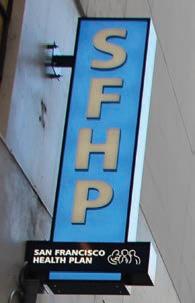
A neighborhood mainstay for more than sixty years, the Potrero Branch Library has literally measured its popularity over the decades, celebrating its one millionth patron in January. One barometer of the branch’s enduring attractiveness is the heavily attended, bi-weekly storytime sessions that the library offers for free.
Every Tuesday and Thursday youth services librarian Jenny Scholten and branch manager Mary Ellen share a small collection of children’s books with
children, parents, and caregivers. The sessions are highly interactive. They open with a sing-a-long song, followed by a forty minute mixture of stories –such as One Gorilla by Anthony Browne – dances –“Popcorn in a Pan” – and songs – “The Itsy Bitsy Spider” – accompanied by musical instruments. The gatherings are designed to entertain, engage, and cater to the short attention spans of the Hill’s littler people, though, as one attendee put it, storytime is “appropriate for all age groups.”
According to Deb Lahidji, a grand-
I had a morning call at a waterfront home in Tiburon. There were six cars parked in the driveway. Three were under covers – two vintage Ferraris and a BMW CSI – three were exposed: a Jaguar convertible, an older Mercedes and a tricked out bright yellow Jeep.
I was met by an attractive Middle Eastern woman in her late-40s. She led me down the side of the house; we entered through a sliding glass door. I stepped into a large, glass-encased room that hung over the Bay, facing Angel Island, with views of downtown Tiburon and the Golden Gate Bridge.
I encountered a grey haired man in his mid-60s who was standing on a chair fiddling with a light cover, trying to screw it back into a ceiling mount. He was having trouble with the task; I told him to get down, and executed the job easily. The room had thick, high end carpet, white and stained in many places. It was filled with huge, ornate furniture, gold sculptures and art pieces, like an Egyptian museum. There were a couple of electric guitars in a corner and a rare framed poster of Jim Morrison on the wall. A huge wall-mounted flat screen television was blaring a black and white Western from the 1960’s.
The man told me he was battling brain cancer and had to give up his meat company a few years back. I noticed that the table next to his chair had a vast array of medications on it. I asked how he was doing; “So so,” he replied. I inquired about the cars; he said that one of the Ferraris was a 1972 Dino he’d purchased for $42,000 and was now worth hundreds of thousands of dollars.
The man and I got along well, but the woman wasn’t happy with any of my wares. She never smiled. I brought out our high end stuff, but she wanted patterned carpet and, in retrospect, I think she felt daunted by the thought of having her ridiculously flamboyant furniture temporarily displaced. I did my best to try to make the sale, but stopped short of becoming unfriendly about it. As I left I helped them put a thick glass piece back on a gold encrusted table that’d been moved to fix the ceiling light.
I made a late-afternoon call in Bayview, about eight blocks east of Third Street, halfway down toward Highway 101. I arrived at an address that featured broken down cars in front of it and a beat up, graffiti-laden house with broken windows. The visit was for an
apartment behind the main house, but it looked abandoned. Trash was blowing against the garage door. It was getting dark. A disheveled man mumbling to himself hobbled by behind me.
There was no doorbell; no one responded to my raps on the garage’s side door. I called my company’s help line; they said that the contact would be out soon. I was ready to leave, but was soon met by a scrawny blond haired white kid, maybe 28, wearing an unravelling, oversized sweater, dirty black baggy pants and filthy red tennis shoes. He had a shockingly gruesome swollen black eye with stitches still in it.
I immediately asked how that’d happened. He told me that he did martial arts. But he was all of 130 pounds and, as he said it, danced around like a little kid would imitating a martial artist. Clearly he’d been beaten up.
He led me down a pitch black side walkway to his place behind the garage. My mind was racing as to how I could extract myself to the safety of my car as quickly as possible. He ushered me into a horribly trashed windowless room with a swinging 40 watt light bulb barely illuminating the place. He said “they” needed a price to redo their floors. I asked if he had a roommate; he introduced me to a woman reading a book under covers in a mattress thrown on the floor in an equally scary adjoining room. She never turned around, just lifted her arm and waved and appeared to be topless as her bare back was exposed. There was so much junk –clothes, boxes, trash, broken furniture, pieces of bicycles – that we had to step over stuff just to walk around.
I told the guy that my company wasn’t right for his situation, as we have a $500 minimum order and that he should go grab a roll of carpet at a yard sale, and ran out of there. As I left it dawned on me that they might be squatters.
Three months later I was called to the same address to be met by the landlord, a fat, New Jersey, Italian wise guy type in a dirty thin T-Shirt and gold chains. He said he was in the process of evicting his tenants and needed a courtordered quote to repair the floor. I told him my story; he said that they were meth heads; that she was a prostitute and had beat him up. He said that the place was the source of much drama; the police were no strangers to the address.
The Carpet Chronicles is a sixpart series detailing one Potrero Hill resident’s experiences selling home flooring in and around San Francisco.
mother from Ann Arbor, Michigan who was visiting her son and grandchildren, storytime is of vital importance to her family’s daytime activities. “This is typically their fussy hour,” she explained, but being in an environment where other children are focused and enjoying the stories “encourages good behavior.”
“Kids need an outing; we plan our day’s schedule around storytime. An early breakfast before, and a late naptime after. It’s really great.”
On a recent Thursday morning storytime had attracted 24 grownups
and 26 children, ranging from lessthan-year-old babies to walking, talking toddlers. Scholten, who was running the session, said that attendance levels are “consistently 45, to 60, to 70,” with “a lot of regulars.” Bilingual – Spanish – readings have been offered since the branch’s inception.
The Potrero Library offers storytime twice a week, totaling three sessions: Baby Bounce, on Tuesdays at 1:15 p.m. and Thursdays at 11:15 a.m.; and Family Storytime on Thursdays at 10:15 a.m.
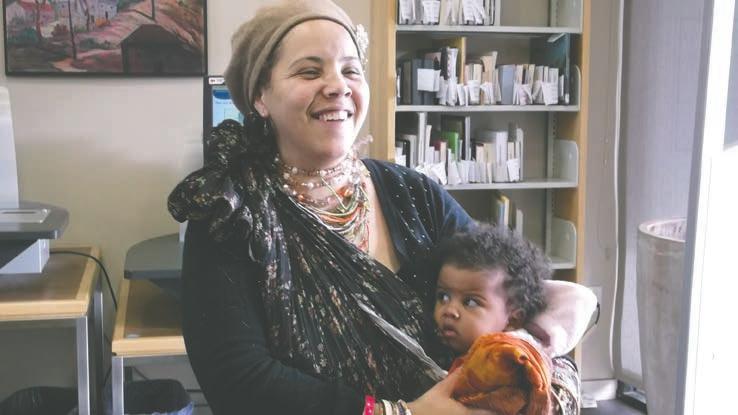
PALM SUNDAY MARCH 20
Saturday Vigil: 4:15pm, Palm Sunday, 8:30 & 10am EASTER TRIDUUM
HOLY THURSDAY
MARCH 24: 7:30pm
GOOD FRIDAY
MARCH 25: 12:15pm
HOLY SATURDAY
MARCH 26
Easter Vigil: 8:00pm
EASTER SUNDAY
MARCH 27
8:30 & 10:00am


Saturday
Tuesday
StTeresaSF.org
Phone:
Email: info@stteresasf.org
Through April 8
Community: Free Tax Prep
The Potrero Hill Neighborhood House, in partnership with the San Francisco Housing Corporation and the United Way of the Bay Area, will provide free tax filing services for households with income less than $54,000. Every Friday, 12 to 4 p.m., Nabe, 953 DeHaro Street. Walk-in only. Information: 415.822.1022.
Community: Nancy and Stephen Grand Family House Grand Opening
The Nancy and Stephen Grand Family House celebrates its grand opening in Mission Bay, along the shores of the San Francisco Bay, just south of AT&T Park. For more than thirty years, Family House has served as a home away from home for families of children with cancer and other life-threatening illnesses, providing physical comfort and emotional support, free from financial concerns. Ribbon-cutting ceremony at 11 a.m.; 540 Mission Bay Boulevard North, at Third Street. Information: familyhouseinc.org.
3
Art: Museum of Craft and Design Lab: Glass Marbling
The folks at Hot Glass, Cold Beer join the Craft Lab party to teach how to add colorful marbling to a hand-blown drinking glass. Beer and snacks included. 7 to 9:30 p.m., Museum of Craft and Design, 2569 Third Street. $10 non-crafters, $13 nonmember craft, $5 members, $5 veterans. Information: sfmcd.org or 415.773.0303.
March 4 through May 8
Culture: China at the Center; Rare World Maps Travel back 400 years to an era when the globe was being mapped and its marvels discovered. Through two rare maps - collaborations between Jesuit priests and Chinese scholars - explore what 17th Century cartographers knew of the world and what they imagined, such as mermaids, giants and unicorns. These maps transport us to a time of exploration, collaboration and wonder. Open during museum hours: Tuesday through Sunday, 10 a.m. to 5 p.m., Thursday 10 a.m. to 9 p.m. starting March 17. Asian Art Museum, 200 Larkin Street. Tickets: Members, Free; Children under 12, Free; Adults, $20. Information: asianart.org/
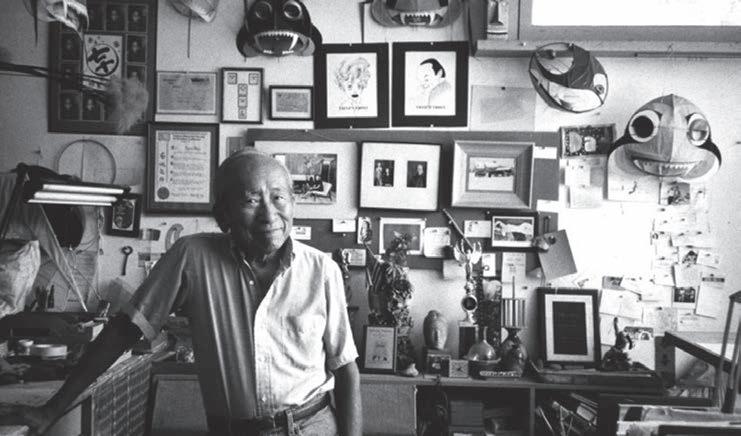
exhibitions.
March 5th and 6th
History: San Francisco History Days at the Old Mint 2016
The Old Mint hosts a series of pop-up museums of San Francisco history with almost 80 organizations telling the stories of the City’s unique past. Join community historians, archivists, genealogists, archaeologists, researchers, educators, reenactors and other history enthusiasts for this unique event. Saturday, 11 to 5 p.m., Sunday, 11 to 4 p.m. Free. 88 5th Street. Information: sfhistorydays.org.
Art: Abigail Drapkin Opening
Art opening for Abigail Drapkin. 6:30 to 8:30 p.m., Farley’s, 1315 18th Street. Information: 415.648.1545.
Music/Nightlife:
Maureen McVerry: Love will Kick Your Ass Critically-acclaimed musical theater singer and comedic cabaret artist Maureen McVerry presents her new solo cabaret show, Love Will Kick Your Ass, brimming with songs that celebrate love in all its forms: old love, new love, true love and the power of love to make you feel elated, and then weep like a baby. Maureen will be accompanied by a three-piece combo including Johnny Verry, bass, Victor Flaviani, percussion, with piano and musical direction by Dave Dobrusky. Directed by F. Allen Sawyer. 7 p.m. Oasis, 298 11th Street, at Folsom. Tickets: $20 in advance, $25 at the door. Information: sfoasis.com or

415.661.1260.
Music: Daniel Berkman
9
Live music by Potrero
Hill resident Daniel Berkman, a composer, multiinstrumentalist and innovator of the kora, a 21-stringed harp/ lute from West Africa. 7:30 to 9 p.m. Farley’s, 1315 18th Street. Information: 415.648.1545.
March 10 through 20
Film: Center for Asian American Media (CAAM) Film Festival Entering its 34th year, CAAMFest is a celebration of film, music, food and digital media from the world’s most innovative Asian and Asian-American artists. This year’s films include Tyrus, A Tale of Three Cities, Daze of Justice, and Right Footed Home is a Hotel, a short film directed by Todd Sills and Kevin D. Wong, follows Huan Di and her daughter, Jessica, who live in an eight by 10 feet San Francisco room with no kitchen or bathroom. Recent immigrants from China, they navigate a new language and culture while living in single-room occupancy hotels, a vital but disappearing housing option for the City’s working class. Producer Rowan Brooks owns Potrero Hill-based Lucky Dragon Productions. With showings at the Castro Theatre, New People Cinema and New Parkway Theater (Oakland), CAAM adds the Roxie Theater and the Alamo Drafthouse to its venues. For more information and show times: caamfest.com
12
Women’s Month: SHERO Luncheon
To celebrate women’s month, Potrero Hill Neighborhood House is hosting a SHERO Luncheon honoring local SHEROS for their contribution to the community. Noon, Potrero Hill Neighborhood House, 953 DeHaro. For tickets or sponsorship opportunities, contact Shervon Hunter, 415.826.8080
Dance: A Revolution in Aesthetics, The Dance Legacy of Isadora Duncan
Lois Flood performs the historical dances of Isadora Duncan, including lively and expressive
lyrical and dramatic dances. Greek myths are the theme of many of the dances. Marjorie Lynn Wagner, poet-artist, will read quotes by Duncan. All ages will enjoy these exquisite, historical dances from the repertory of an artist who revolutionized dance. Question period offered at the end of the program. 3 p.m., Potrero Hill Neighborhood House, 953 DeHaro Street. Free. Information: 925.820.2750.
Music: Matt Bacnis Band
15
Matt Bacnis Band is a southern-influenced pop band from Seattle, Washington. Known for their unique blend of gospel, country and pop, the band captivates listeners with catchy melodies mixed with a campfire sing-along groove. 7:30 to 9 p.m. Farley’s, 1315 18th Street. Information: 415.648.1545.
Music: Soul Delights
16
Live Music by the everpopular Soul Delights. 7:30 to 9 p.m. Farley’s, 1315 18th Street. Information: 415.648.1545.
17
Community: Farley’s 27th Anniversary and St. Patrick’s Day Celebration
Join us in the morning for bagpipes and Irish music, approximately 9 a.m. to noon. Enjoy Irish Stew and soda bread throughout the day. Farley’s, 1315 18th Street. Information: 415.648.1545.
19
Art Lecture: Aaron Hughes: TEA
On the anniversary of the U.S. invasion of Iraq, join artist veteran Aaron Hughes for a special performance in conjunction with his exhibition featured piece, Nine Teacups TEA is an ongoing dialogue that traverses a variety of landscapes, from the tea sipped on a Chicago sidewalk, to a quaint coffee shop, to a cage in Guantanamo Bay, to a motor pool in Iraq; tea isn’t only a favored drink but a shared moment that transcends cultural divides and systems of oppression. Museum of Craft and Design, 2569 Third Street. Tickets: $10 non-members, $5 seniors/ students, veterans and members free. Space is limited to 20. Please pre-register. Noone turned away for lack of funds. Information: sfmcd.org or 415.773.0303.
Art: ArtSpan Juried Art Auction
This auction draws avid art appreciators to bid on 120 artworks in diverse mediums by local artists in live and silent auctions. All of ArtSpan’s programs are supported by this event. VIP Reception: 5:30 to 6:30 p.m., General Admission: 6:30 to 10 p.m. SOMArts Cultural Center, 934 Brannan Street. For Ticket prices and more information: artspan.org.
HOMELESS from Front Page
squished into smaller and smaller areas. We're getting reports of areas where the homeless were being threatened, where police were saying, 'Move your stuff or we'll throw it in the hopper.'”
The situation became all the more unsettling after various news outlets reported the presence of knives and guns at homeless encampments. One man threatened to stab KRON 4 reporter Stanley Roberts on air when he went to investigate the tent city that was recently removed from Division Street.
Kelly Keith, a Hill resident since 1992, had his own run-in at 100 Division, where he felt threatened. He's become accustomed to homelessness after living in the area for so long, but said, “What scares me now is the drug addicts that are there. They're shooting up and taking heroin and crystal meth. And there's a criminal element because someone had to sell them the drugs.”
Keith acknowledged that there are many kinds of homeless people – people who chose to live that way, drug addicts or those needing mental help, and individu-
SHORT CUTS from Page 2
The multi-million dollar redo of one of the City’s most loved parks, Dolores, doesn’t appear to have been accompanied by much innovative thinking about how to manage doggy visitors. While the kids are low-walled into their previously renovated playground, the animals are allowed to run free, depositing fecal matter and urine willy-nilly on the now luxurious, soon to be degraded, grass. Apparently politicians are leashed when it comes to dogs, as demonstrated by the similarly uncontrolled Esprit Park, as well as the planned almost $60 million upgrade to Animal Care and Control’s facility. The nearby Society for the Prevention of Cruelty to Animal’s modern building has excess capacity, and large private sector vendors, such as Pet Camp
als who are down on their luck – and in fact has a friend on the street. These days though, he fears for his safety.
“We shouldn't be afraid to walk on our streets or step over someone on the streets,” he said. Keith noted that there’s been an increase in car breakins and thefts; particularly of bicycles.
“Why was there never a problem before?” Keith asked. “The variable is the homeless and the criminal part. With the amount of money the City spends on everything else, they're not spending the money the right way.”
That’s a sentiment Friedenbach echoed. “Part of what's so infuriating is we see messed up priorities. For the Super Bowl, the City spent $5 million. Yes, it brings in money for the City, but that money could have been better spent on housing.”
“I think being a good neighbor is important: introduce yourselves to each other, know each other, check-in on folks, make sure they're alright,” Friedenbach said. She encouraged residents to get to know the local, community-based organizations working on homelessness, to volunteer, to read
and Wag, could be contracted to provide services at a much lower cost to taxpayers…Meanwhile, the Department of Recreation and Park is counting on families to police the new, lovely, bathrooms installed adjacent to the Dolores Park playground, when a more prudent approach might be to engage a monitor or two, perhaps as part of an employment training program….Let’s hope Rec and Park does better with Jackson Park and the Potrero Hill Recreation Center, which are on deck for their own multi-million dollar facelifts.
Irene Crescio, a lifelong and passionate Portola resident, died on January 26. She was a proud Portola Neighborhood Association member, deeply committed to the betterment of her beloved neighborhood. So long, Irene!

the homeless newspaper The Street Sheet, and engage in conversations about the problem.
“When people start hating on your neighbors, start standing up for them,” she said. “These are systemic issues. There is a huge gap in income and rent; you don't need to blame people who are victims of systemic disparities. And put pressure on City officials.”

“I'm surprised [Mayor] Ed Lee and Sam Dodge [director of the City's Housing Opportunity, Partnerships, and Engagement office] haven't done anything on this,” said Keith. “I emailed Lee for an appointment asking him to come down here and he never responded. He's not doing anything.”
The mayor's office didn’t reply to repeated requests for comment from the View either. However, San Francisco Board of Supervisor Malia Cohen held a hearing last month that focused on the City's response to homelessness so far this year. She requested information from various City agencies, including the Department on Homeless Services, Homeless Outreach Team, Department of Public Health, and Human Services Agency. Cohen wanted to know the projected timeline and milestones from each of these agencies, and requested a report from the Budget and Legislative
Analyst detailing the costs of managing and mitigating the impact of people living on the street versus placing them in permanent or supportive housing.
Last month, the City erected a new, emergency, winter shelter at Pier 80. The facility has 150 beds, and will remain open through this month. But, according to Friedenbach, the solution isn’t to build more shelter beds – although that’d help – but to invest in housing. “Pull the properties that are five to 10 years down the road from being complete and have 30 to 40 percent go to the homeless. Prioritize housing for people in homeless units,” she said. “It's impossible to get well from a behavioral health issue if you're still on the streets because you're getting traumatized over and over again. If we get people in housing, it moves people closer to where they want to be in terms of health. Once in housing, then we can ensure access to treatment. Build up on our treatment side for sure, but it's got to be housing first.”
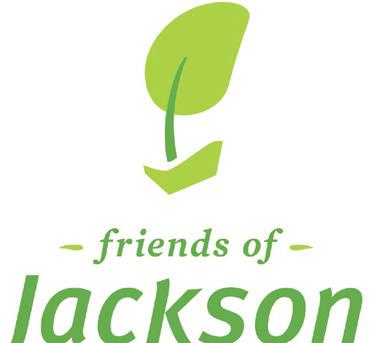

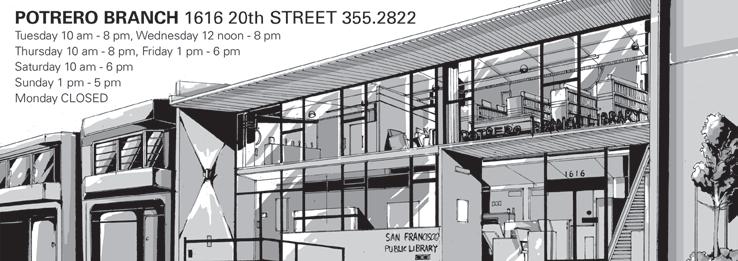
Holiday Harp Concert with TriskelaPaper and Light Tinkering: Make electrical circuits on a piece of paper. Sign up by calling 415.355.2822 or stop by the branch. This is an adult program. Wednesday, March 9, 6 to 7 p.m.
Chair Yoga with Connie Scott: Enjoy an energizing chair yoga class! No yoga experience necessary! Thursday, March 10, 1 to 1:45 p.m.
Creativity and Art Group: Express your creativity through art, music, meditation and more! Led by Cat Ehisen, family counselor at the Potrero Hill Family Support Center, this all-ages program meets every Friday, beginning March 11, 1:30 to 2:30 p.m.
Write Your Own Will: Learn the basics of estate planning, then write your own will under the supervision of Stuart Bronstein, a California attorney. Bring a blue ink non-erasable pen. Please sign up in advance by emailing Julieta at julieta.carrillo@sfpl.org or calling 415.355.2822. Saturday, March 12, 1.30 to 3 p.m.
Movie Night: Suffragette This inspirational film focuses on the women who fought bravely in the United Kingdom’s suffragette movement during the early 20th century. PG 13. 106 min. Tuesday, March 22, 6 to 8 p.m.
Healthier Living Workshops: Do you or someone you love or care for have arthritis, diabetes, high blood pressure, heart problems or other chronic health problems? If so, sign-up for this workshop series and learn how to manage pain and stress, set goals to make positive life changes, and work more effectively with your doctor. Pre-registration is required. Contact the Potrero Branch at 415.355.2822. Saturday, March 26, 1 to 3.30 p.m.
Game On!: Play video games on our big screen in the Potrero meeting room! Ages eight to 18 welcome. Tuesdays, 4 to 6 p.m.
Make a Tin Can Banjo: Potrero Branch welcomes Stewart, founder of the Tin Can Banjo project. Tools and materials provided to make your very own “Canjo.” Jam session follows.Space is limited; call Potrero Branch at 415.355.2822 to register. Youth ages nine and under should come with an adult prepared to help. Saturday, March 5, Session 1 at 1 p.m.; Session 2 at 2.30 p.m..
10 Hour SAT Intensive: Free SAT test preparation, conducted by Edupath. Register online at edupath.org/sf. Sundays in March, 1.30 to 4 p.m.
Saturday Snacktivity: With food provided by the Good Life Grocery, we’ll offer a wholesome snack followed by a fun activity. All ages welcome. Saturdays, 11 a.m. to 12 p.m.
Baby Rhyme and Play Time: Songs and rhymes for infants up to 18 months old and their caregiver(s). Tuesdays, 1:15 p.m. and Thursdays, 11:15 a.m.
Family Story time: Featuring stories, songs and rhymes. For children from birth to five years old and their caregiver(s). Thursdays, 10:15 to 10.45 a.m.
Puppy Dog Tales: This SPCA program pairs trained dog-and-owner therapy teams with children to nurture literacy, self-confidence, and socio-empathic skills. Your child will adore reading to this calm canine companion in a nonjudgmental setting! For ages four to eight, but older welcome. Call 415.355.2822 to reserve your spot. Space is limited. Fridays, March 11 and March 25, 3:30 to 5 p.m.
Cooking for Kids: Learn how to prepare some simple dishes, and then sample your creations! Recipes will be available to take home. Best for ages five and up. Call 415.355.2822 to reserve your spot. Space is limited. Saturday, March 12, 4 to 5 p.m.
Movie and Meal Day: In partnership with the Potrero Hill Family Support Center (PHFSC), we’ll present a family-friendly film, and PHFSC will provide a meal. Our March selection is Big Hero 6. Rated PG. 102 minutes.Friday, March 18, 3 to 5 p.m.
All programs at the library are free.
“So, what have we here?” Pete exclaimed.
Pete had encountered Justin, trailed by Nash, Stephanie, and Jordan, just inside The Connecticut Yankee’s short corridor entryway, next to a wooden shelving unit that held newspapers and flyers. He bobbed his head, birdlike, as he blocked Justin from moving past him in the narrow passageway. Justin bobbed back, in a more exaggerated fashion, raising his arms like wings.
“Hey, Inky,” said Justin. “How’s the old rag?”
“It’d be better if we had our cartoonist back!” barked Pete, immediately followed by a short coughing fit.
“Anytime you’re ready to show the male figure in all of its glory, Inky, I’m happy to contribute.”
“I don’t think my readers would appreciate a two by eight inch image of a schlong, if that’s what you mean,” Pete frowned.
“Just trying to be realistic,” said Justin. “And really, Sha-long? Is that a Chinese restaurant? Actually, shouldn’t I know that…” He turned towards Nash, grinning. “I’m Asian, right?”
Pete stared at Justin, and then sidestepped to Stephanie. “And who have we here?” he glanced at Jordan, and “and here?”
Rather than answering Stephanie tried to squeeze past Pete without touching him.
“I’m Jordan! Nice to meet you,
Inky!” Jordan exclaimed, followed by a short bow.
“Pete’s the name. I publish The SF Lighting Bolt, San Francisco’s longestrunning neighborhood newspaper. Don’t ask me to re-Pete it,” Pete bobbed at Jordan, who bobbed back. For several seconds no one spoke as the pair bobbed at one another, like two birds communicating silently.
“Uh, I hate to breakup this mating ritual, but we gotta go,” said Nash, pushing past Pete, bumping into Stephanie, which caused her to trip into Justin’s muscular chest.
“Wait, wait,” said Pete, staring at Stephanie. “I know you. You’re with that biotech company, one of the ones that wants to buy Chester’s property.” He swiveled his head towards the bar’s interior. “Is Chester here? Were you talking to Chester?”
“No comment, Inky,” said Justin, placing an arm around Stephanie, who winced. “Let me know when you’re ready to fight the powers of censorship!”
Justin opened the door, and the four crowded out. For several seconds Pete remained in the entryway, bobbing to himself. Then, he waded into the bar.
Each month the View publishes a chapter from Gold, a serialized tale of politics, capitalism, and corruption in San Francisco. Previous chapters can be found on the paper’s website, www. potreroview.net.



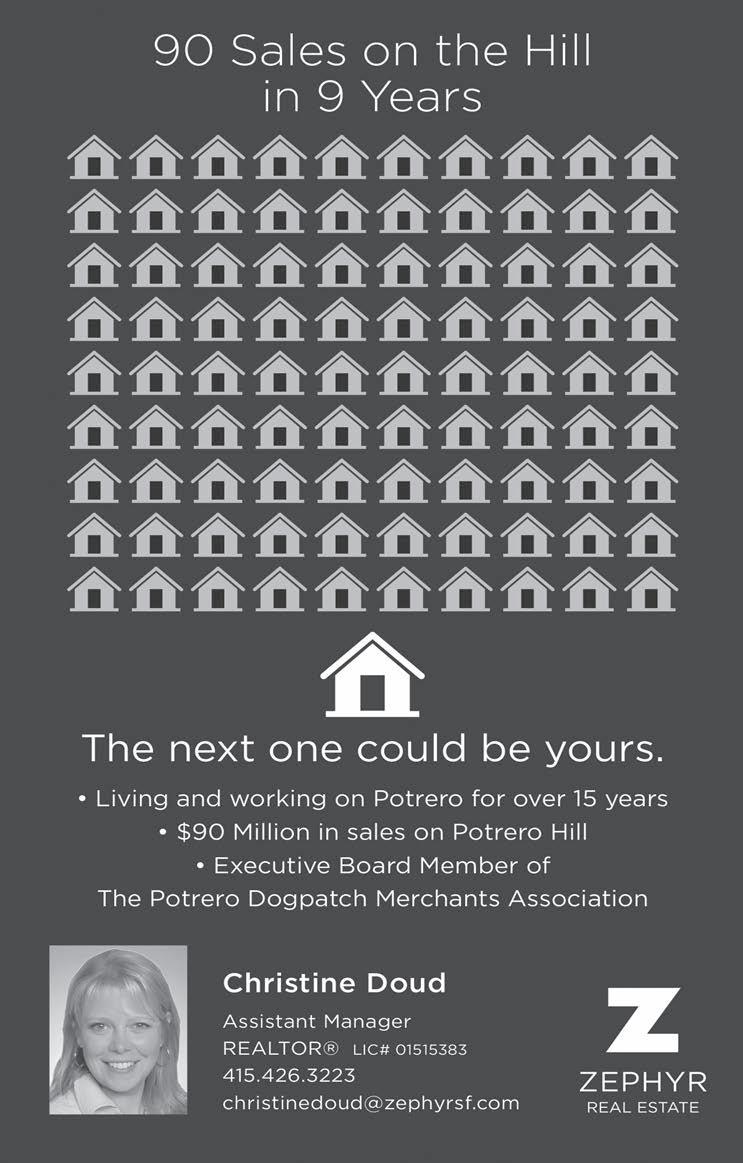
More than 30 years have passed since photographer Barbara Martz was robbed, raped and knifed to death in her home near 25th and Texas streets. In late-January a jury convicted a San Francisco man of her rape and murder for the second time.
John Davis, 49, was found guilty of first-degree murder with special circumstances, according to the District Attorney’s Office. Davis was first convicted of Martz’s murder in 2007, but that decision was overturned two years ago because of juror misconduct during deliberations.
This time, the jury considered the evidence for one day before finding Davis guilty of murder during the course of a rape and burglary.
“If you commit a heinous crime in San Francisco we will do everything ethically possible to bring you to justice,” District Attorney George Gascon said in a statement. “Justice may be delayed, but it won’t be denied.”
On December 4, 1985, at approximately 8:30 p.m., Bobby Adams went to his girlfriend’s, Martz, home at 1510 25th Street. Adams found the front door to the house open and Martz lying dead on the floor inside. Martz was nude and had been stabbed and cut several times. The police found a bloodstained knife that’d been taken from Martz’s kitchen on a walkway between her house and the street.
Davis, 18 years old at the time, lived a block away from Martz, but wasn’t immediately considered a suspect.
San Francisco’s medical examiner’s office took samples of semen from Martz’s body and stored them in a freezer, according to the District Attorney’s Office. In 2002, investigators developed a DNA profile from the samples which were linked to Davis, who was serving time at Pelican Bay State Prison for robbery. A jury found Davis guilty of murder committed in the course of rape and burglary. Davis was sentenced to life in prison without parole.
On appeal, Davis contended the judgment against him had to be reversed and a new trial ordered because the trial court excluded scientific material relevant to the prosecution’s DNA evidence, the prosecutor misled the jury during closing argument, and Davis was denied his constitutional right to confront witnesses against him, among other misconduct. The appeal was granted.
“Thanks to science and the law we were able to bring justice to this family,” prosecutor Andrew Ganz, an assistant district attorney, said in the press release. “Being able to hold this defendant responsible after so many years is an extremely rewarding experience.”
The case was the first time DNA helped San Francisco police solve a violent crime with no known suspect, police said when Davis was first charged.

Potrero Dogpatch Merchant’s Association meets the second Tuesday of each month at 10 a.m. at Goat Hill Pizza, corner of Connecticut and 18th streets. Website: http://pdma-sf.org/. Call 415.341.8949. Next meeting: March 8th.
Starr King Open Space meets for monthly Stewardship Day the second Saturday of each month from 9:30 a.m. to 12:30 p.m. at Starr King Open Space, corner of Carolina St. and 23rd St. Come out and meet your neighbors, be a community steward, enjoy the natural grassland habitat, see spectacular views, and celebrate our beautiful neighborhood open space. Everyone is welcome. Find out more at starrkingopenspace.org or facebook.com/ StarrKingOpenSpace.
SOMA Rotary Club meets the second and fourth Thursday of the month at Mission Rock Resort, 817 Terry Francois Blvd. We meet at 6 p.m. for a mixer and 7 p.m. for a dinner meeting. We provide community service to the Mission Bay, Potrero, and Bayview communities. The focus is on providing services for the under-served of our community. The website is located at: http://www.meetup.com/Mission-Bay-Rotary-Club. For more information contact Nine at: n.ladow@comcast.net.
Potrero Hill Garden Club usually meets the last Sunday of the month at 11 a.m. for a potluck in a local home or garden. We occasionally visit gardens such as Ruth Bancroft, Yerba Buena, Cornerstone, Filoli, and the rooftop garden at the Fairmont. We discuss gardening appropriate for Potrero Hill’s microclimates, and often have speakers on subjects such as drought, wind, shade, pests, and even flower arranging. Call 415.648.1926 for details.
We specialize in custom cabinetry,fine interiors,casework,crown moulding,Wai nscotting,Panelling,Baseboard.Millwork, Wine cellars,Victorian upgrades,.We combine old world charm methods with state of the art technology an materials to provide finishing work for all types of residential developments.Ph.(650) 278-9047.Prendiville Construction since 1990.
Housekeeping
CLEANING PROFESSIONAL 28 years experience. Apartments, homes or offices and apartment buildings. Roger Miller 415-794-4411 References upon request.
Rental Wanted
I’ve been teaching piano at The Voice Studio on Missouri Street. We were recently forced out by the landlord. I’m looking to
rent a room for teaching in the neighborhood every Thursday between noon and 7 p.m. Randy Craig, randycraigpiano@ gmail.com
Computers
COMPUTER PROBLEMS DRIVING
YOU BUGGY? Personal IT consulting for small businesses & busy professionals. Problems fixed! 30+ years experience. I can install & troubleshoot as well as shop for computers/networks/printers. If you’re not technical, don’t worry – I am. Rob 415.935.3305. rob@sfcomputech.com
Producer Wanted
LOOKING FOR…producer/director(s) to help with an original murder mystery musical, to be performed at and for the benefit of the Potrero Hill Neighborhood House. Please call or text Lorys Crisafulli, (415) 471-4284.

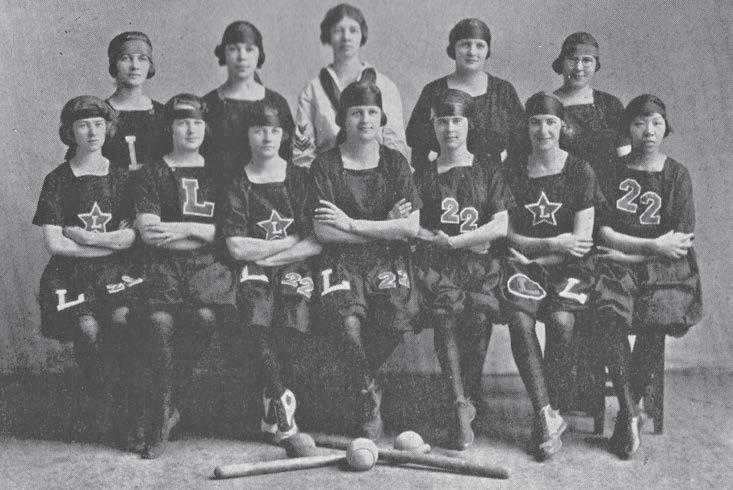
CRIME COLUMNIST: To provide monthly insights into goingson related to the justice system in Southside San Francisco. Contact editor@potreroview.net
CELEBRATE YOUR CHILD’S MILESTONES: The View is pleased to publish photographs and captions feting birthdays, graduations, sports achievements and the like. Send yours to production@potreroview.net
FREELANCE WRITERS: The View is looking for writers, with fee-based compensation provided. Contact: editor@ potreroview.net
SHARED SPACE: Two semi-private offices available, with access to conference area and kitchenette. $1,000. Contact: editor@potreroview.net
Know a woman, or organization catering to women, worth profiling in the View’s May women’s issue? Please tell us! editor@potreroview.net








